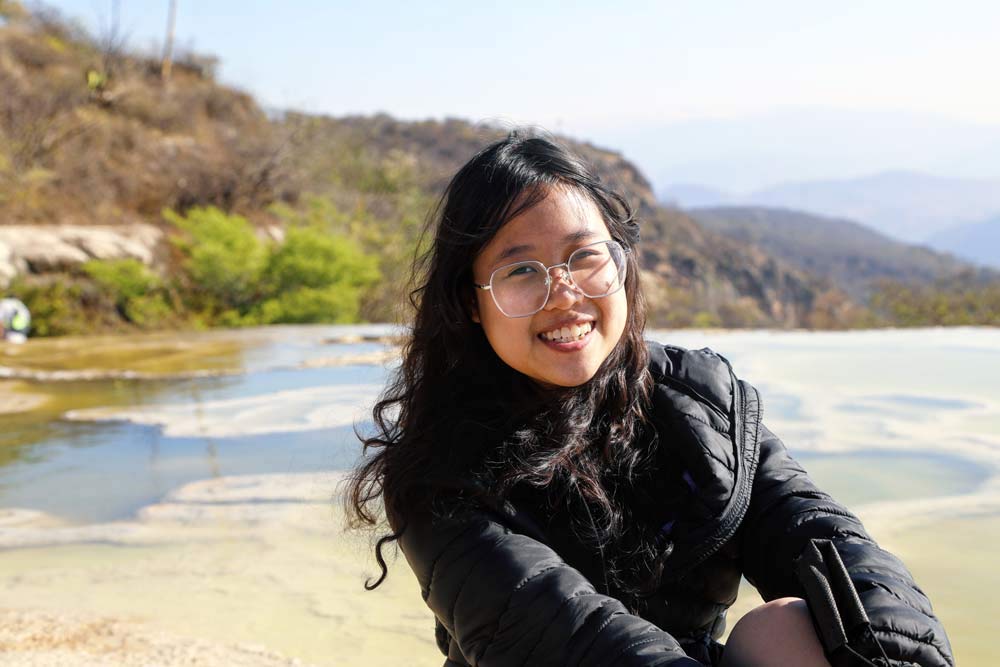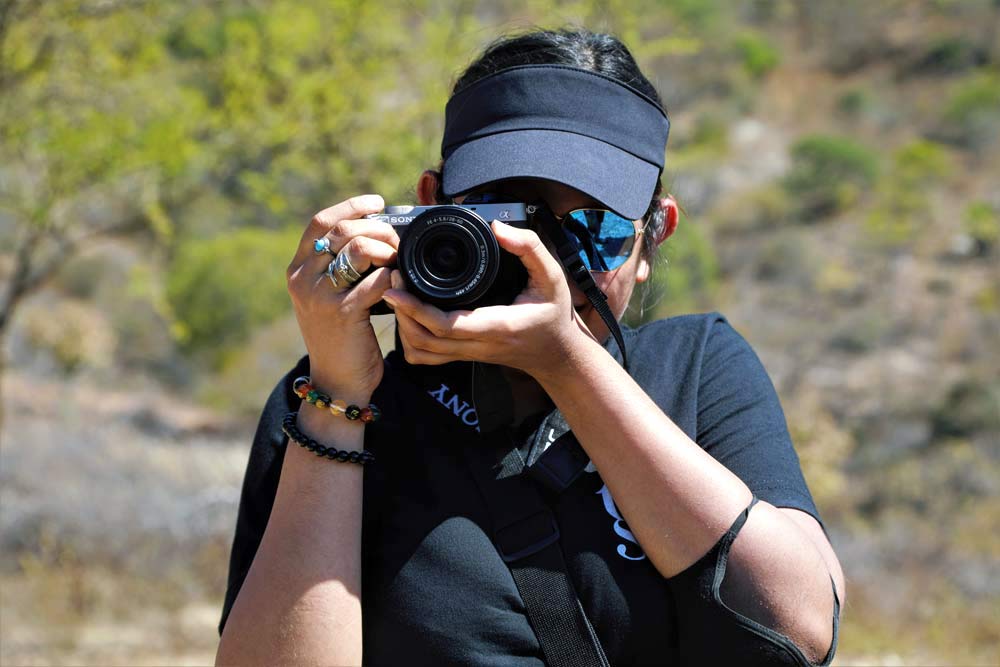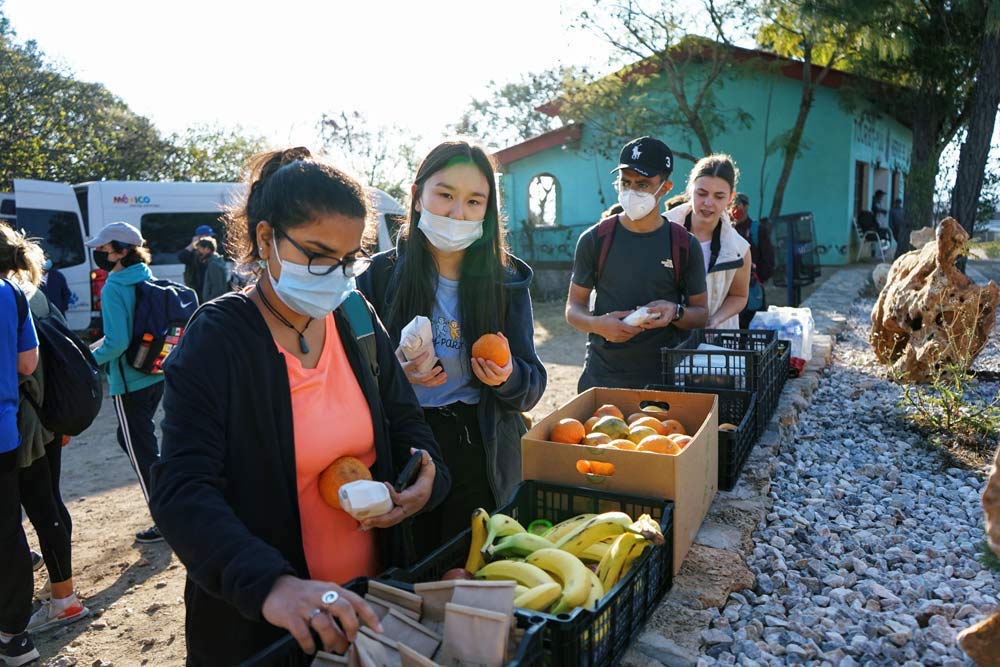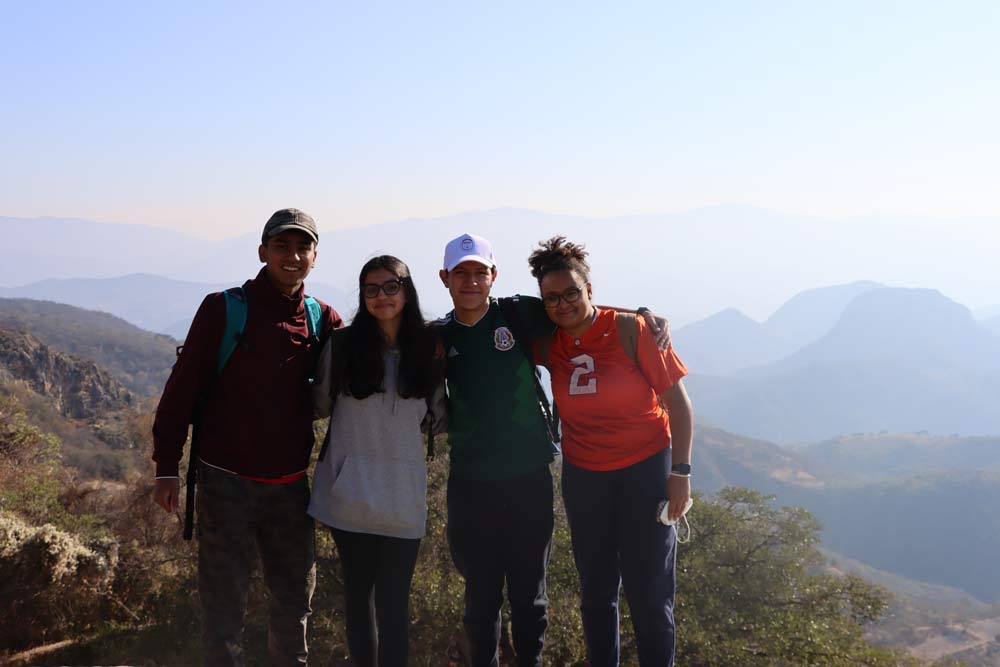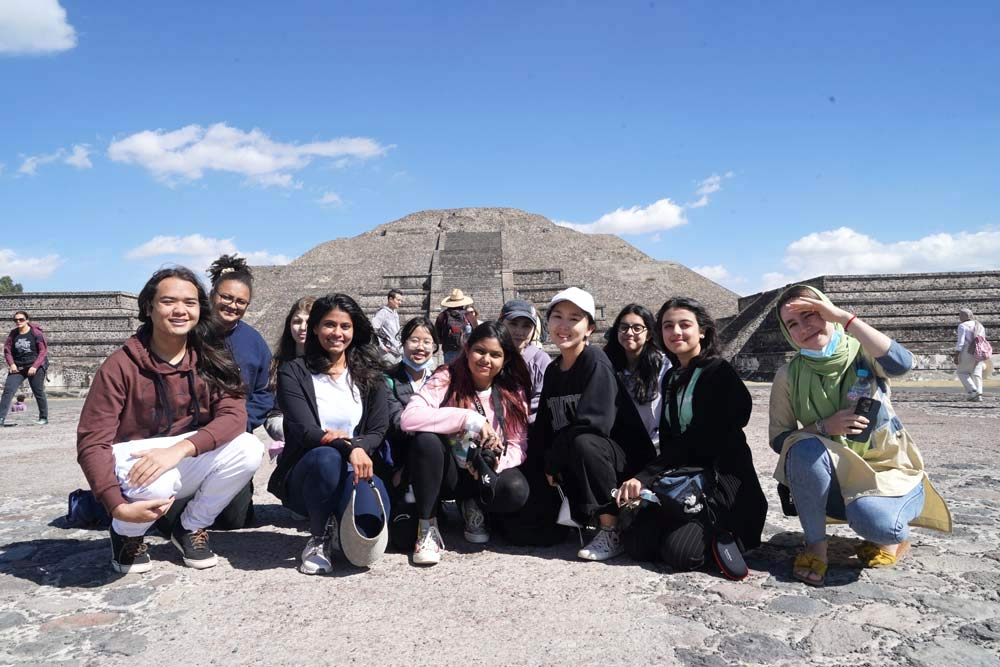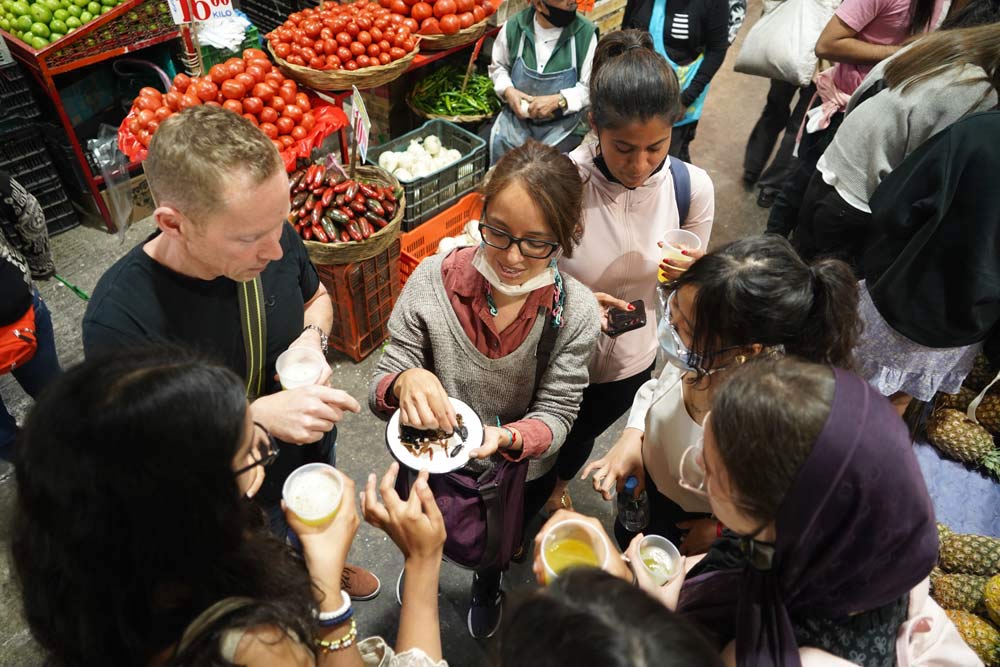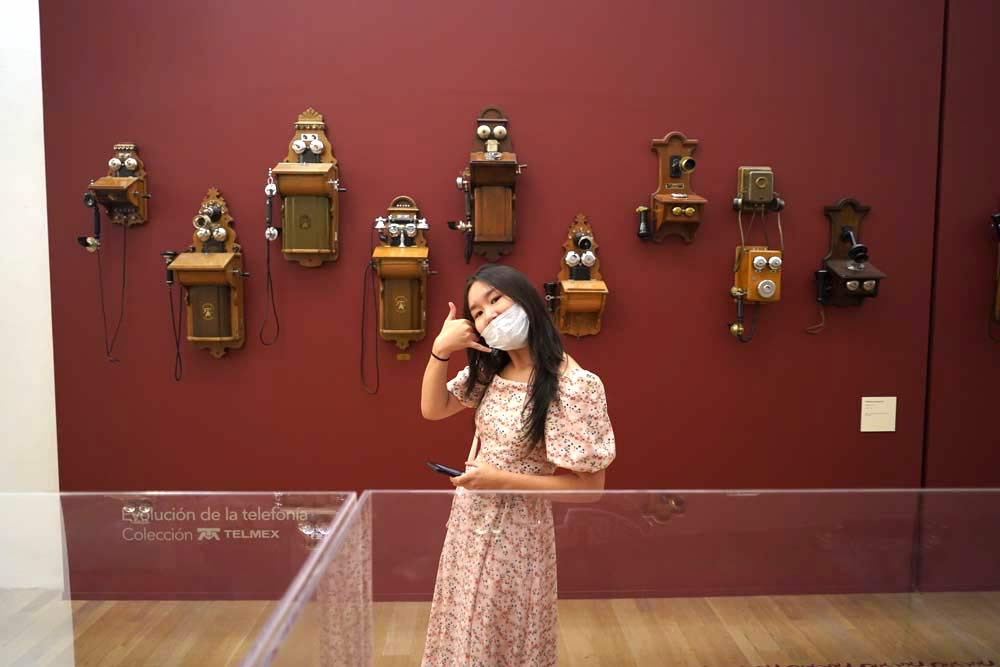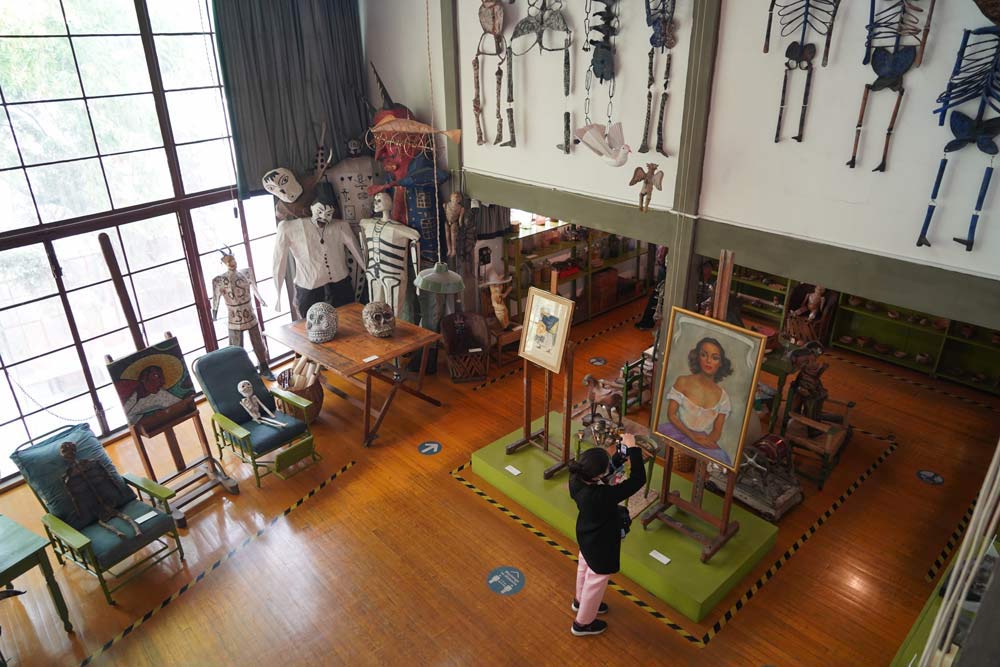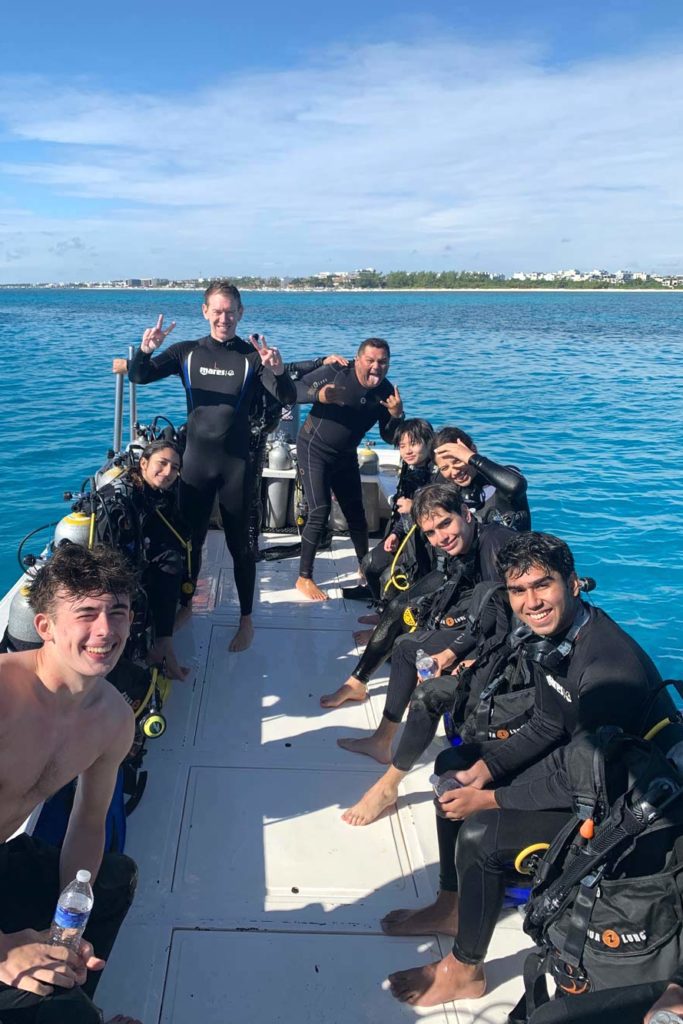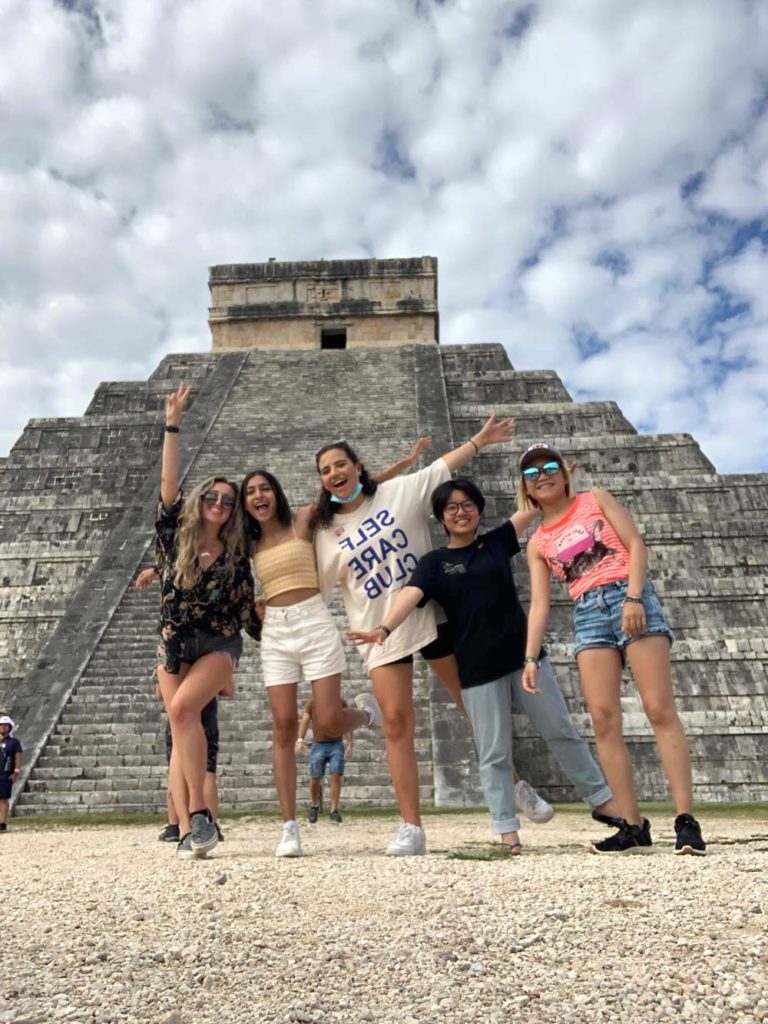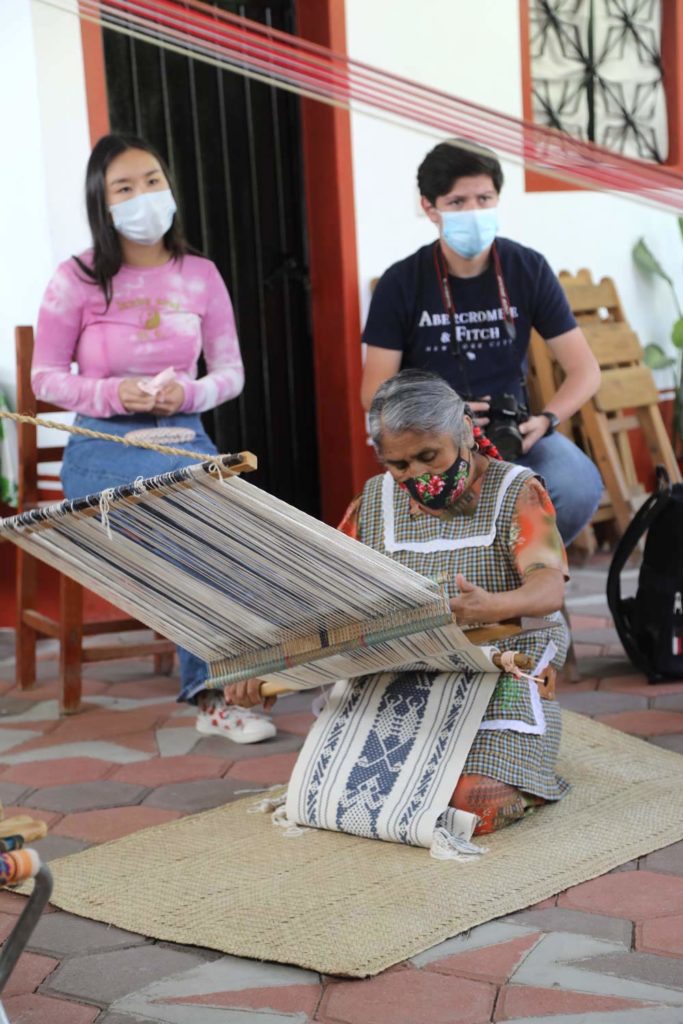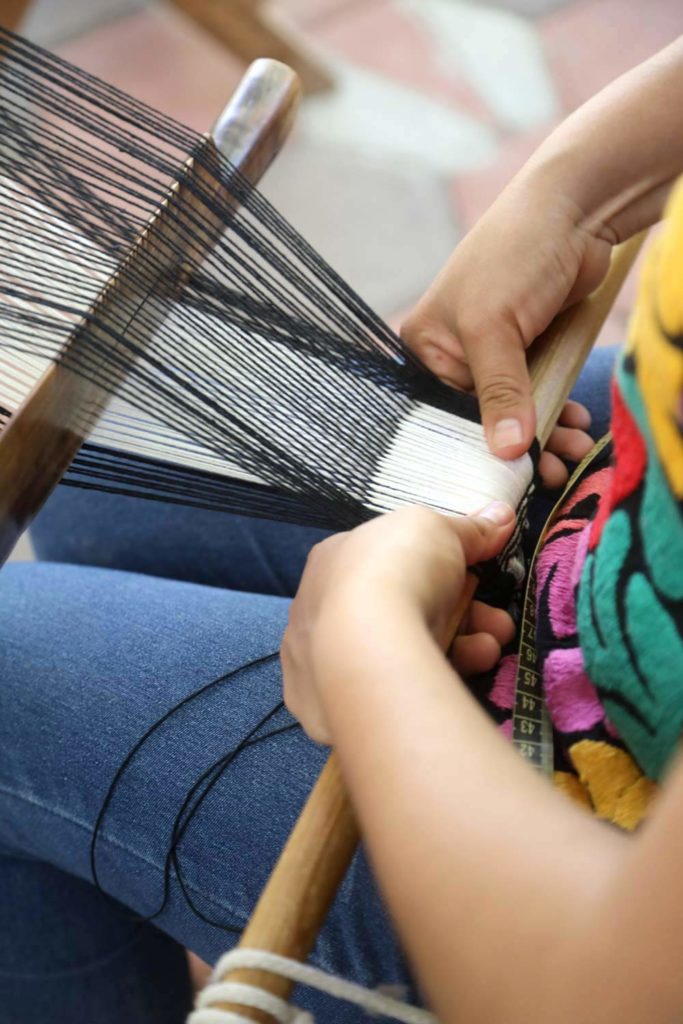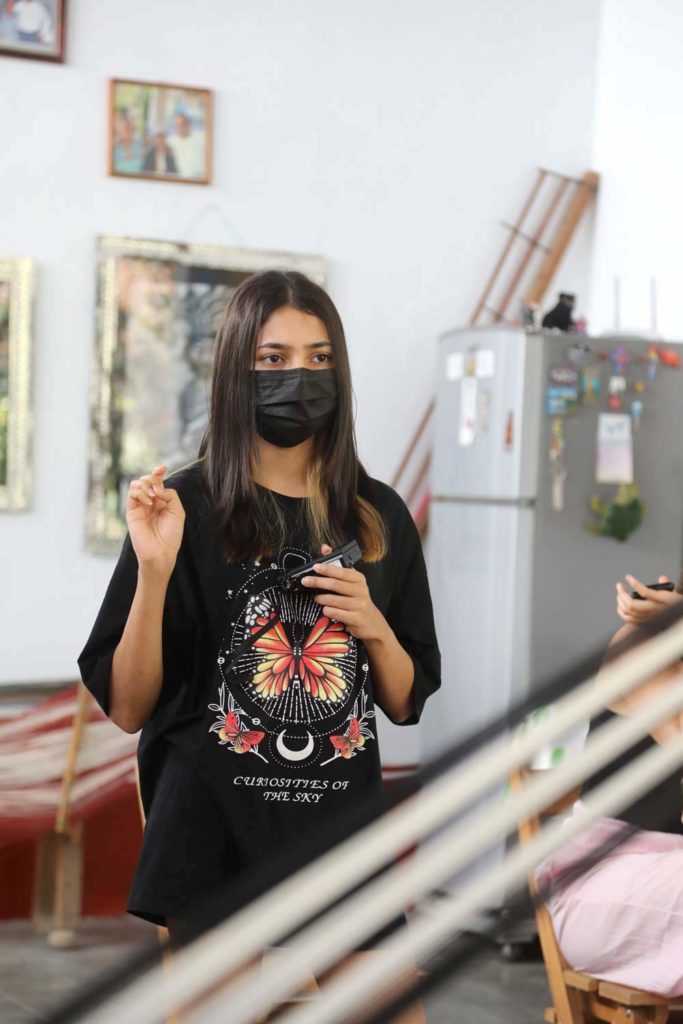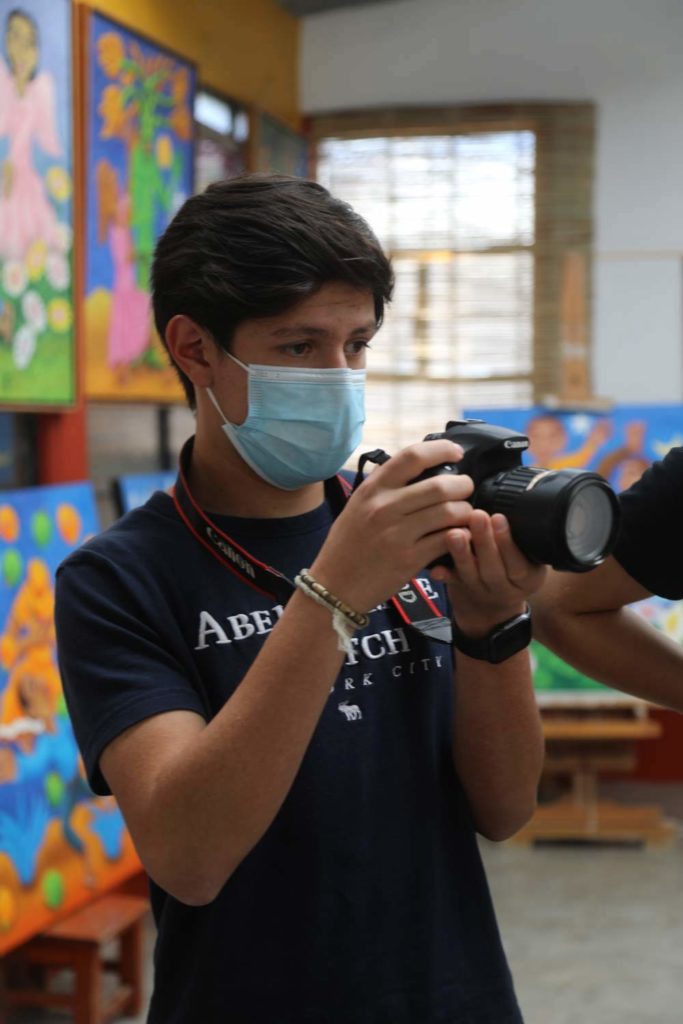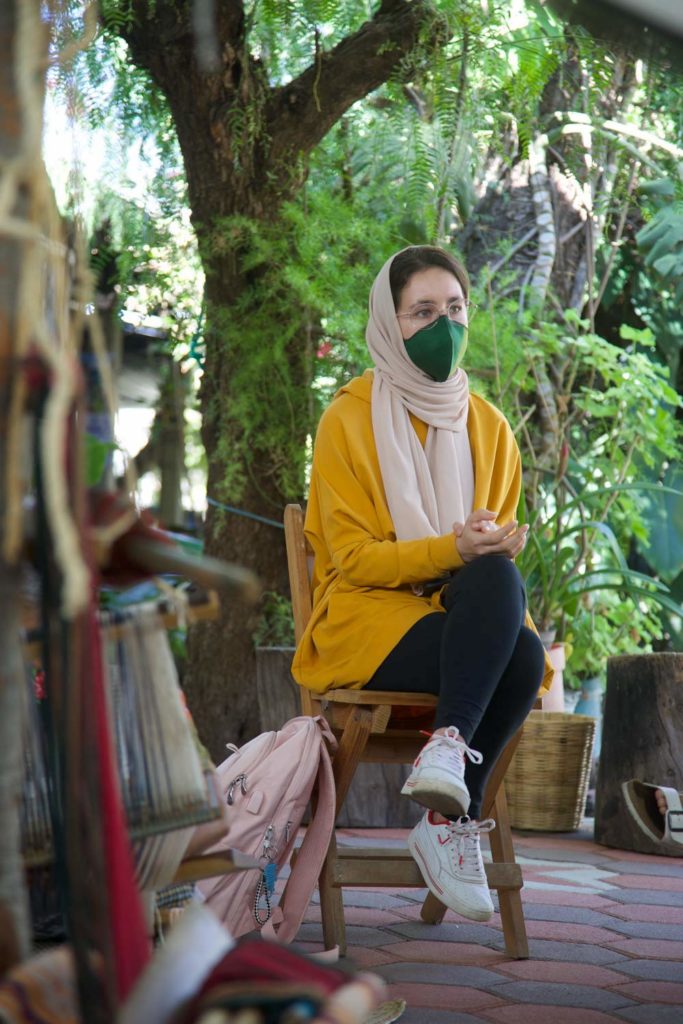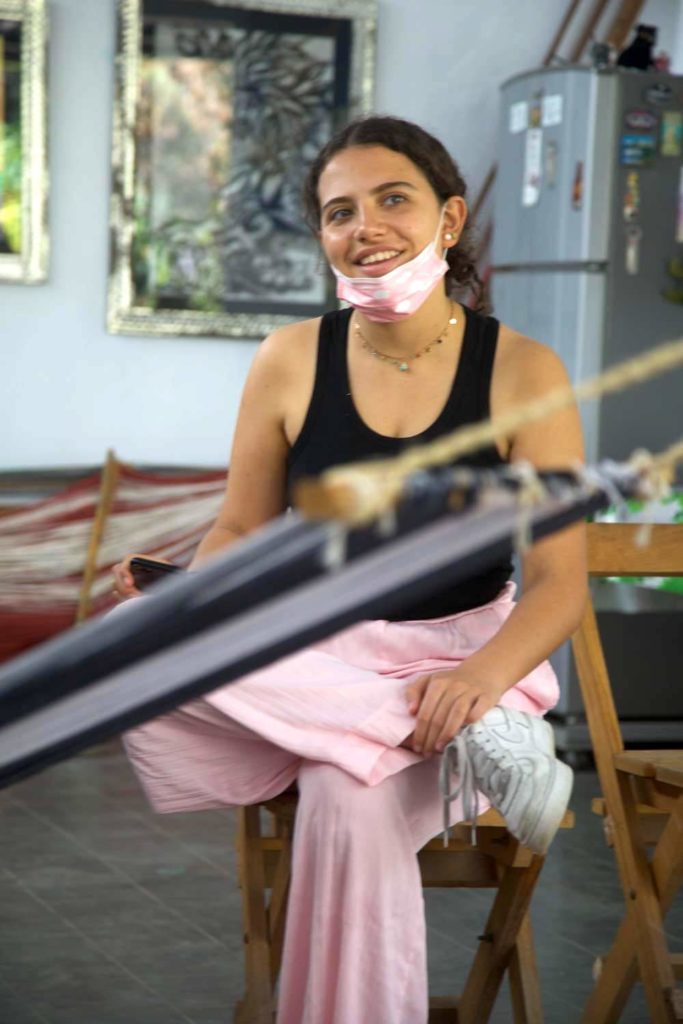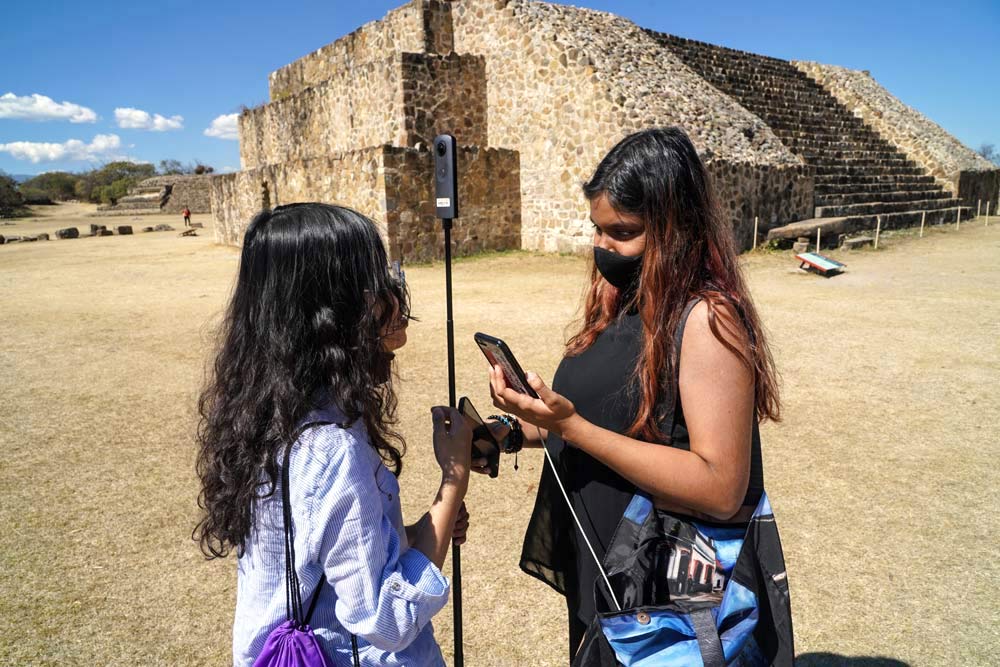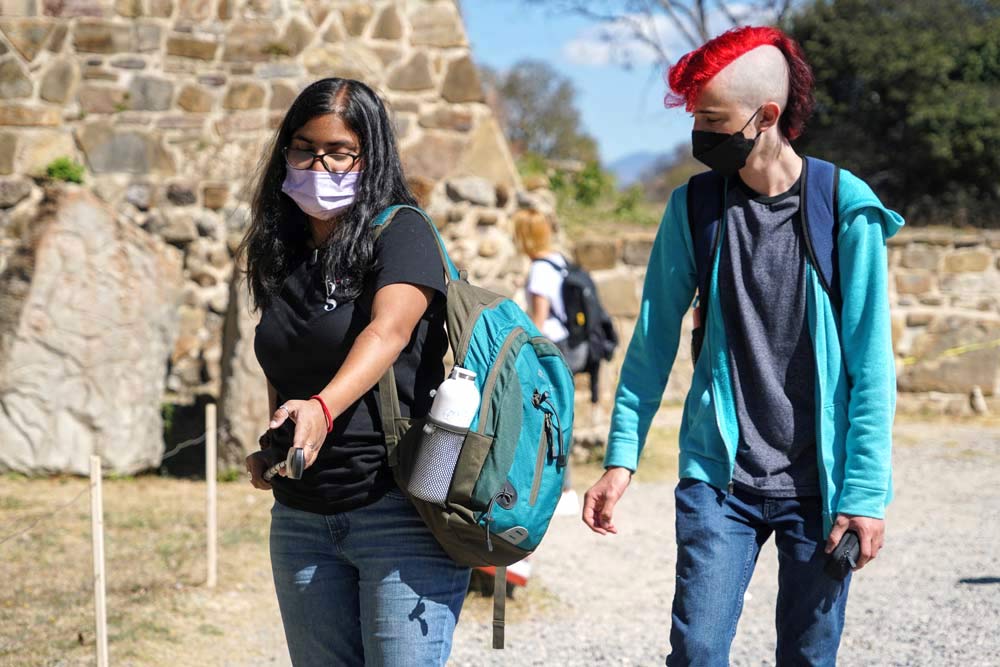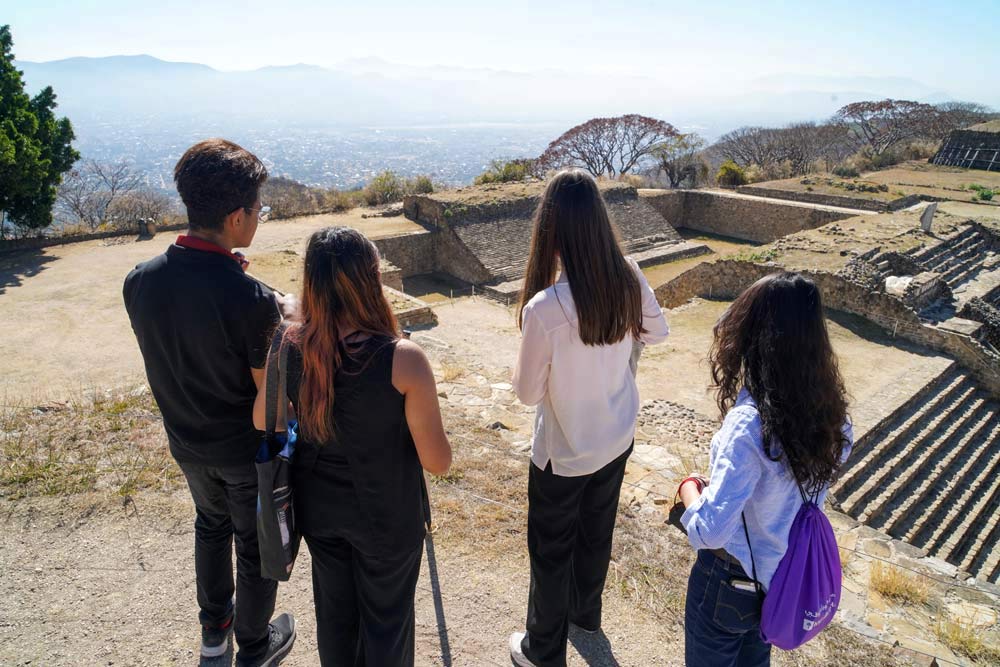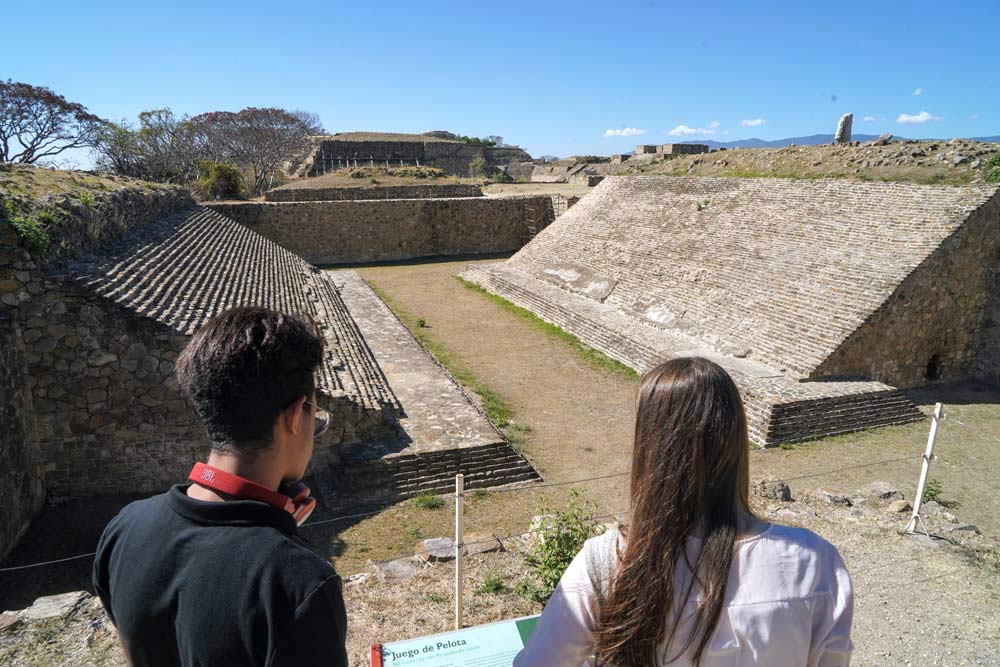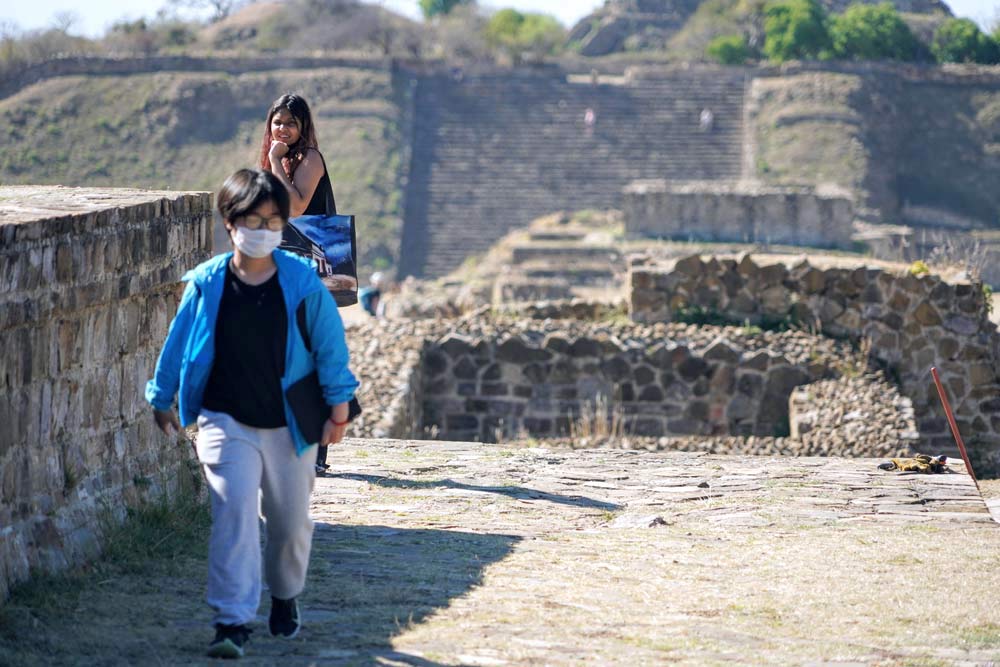1) Hi Nada, can you tell us what you've been up to since graduating from THINK Global School in 2022? Since graduating in 2022, I've been pursuing a passion I found while at TGS, sustainability, and I am currently majoring in engineering in renewable energy systems at Al Akhawayn University, in Ifrane, Morocco. But there is way more than that! I've had a chance also to explore the world of...
Read MoreAfter spending their first two terms of the 2021-22 school year in the United Arab Emirates, our CM2 students had the opportunity to travel to one of Mexico’s most colorful states, Oaxaca, for Term Three.
Renowned for its cultural, artistic, and culinary legacies, Oaxaca has become one of Mexico’s most visited states for those looking to experience indigenous cultures. This focus on culture was a primary factor in our selecting Oaxaca as a term location, as many of our excursions and project modules were centered around gaining an understanding of the Zapotec peoples.
The Zapotec, who refer to themselves as “the Cloud People,” are Oaxaca state’s largest and most important indigenous population. During their seven weeks onsite, students had the opportunity to learn extensively about Zapotec values, culture, and the challenges they face in the 21st century.
Coyote Aventuras Collaboration
To make sure that our students got the most out of their time in Oaxaca, THINK Global School school partnered with the local group Coyote Aventuras. Coyote Aventuras specializes in providing excursions that are logistically and spiritually respectful of the places they visit, and they “strive to share Oaxaca in its full sense of beauty and complexity.” Thanks to Coyote Aventuras, our students were able to embark on a variety of excursions in Oaxaca that paired physical activity with stunning locations.
Residence in Jalatlaco
Students were located in Oaxaca City’s Jalatlaco neighborhood for most of the term. Jatalaco is one of the oldest barrios in the city and is widely considered one of Oaxaca’s hidden gems due to its colorful homes and cobblestone-lined streets.
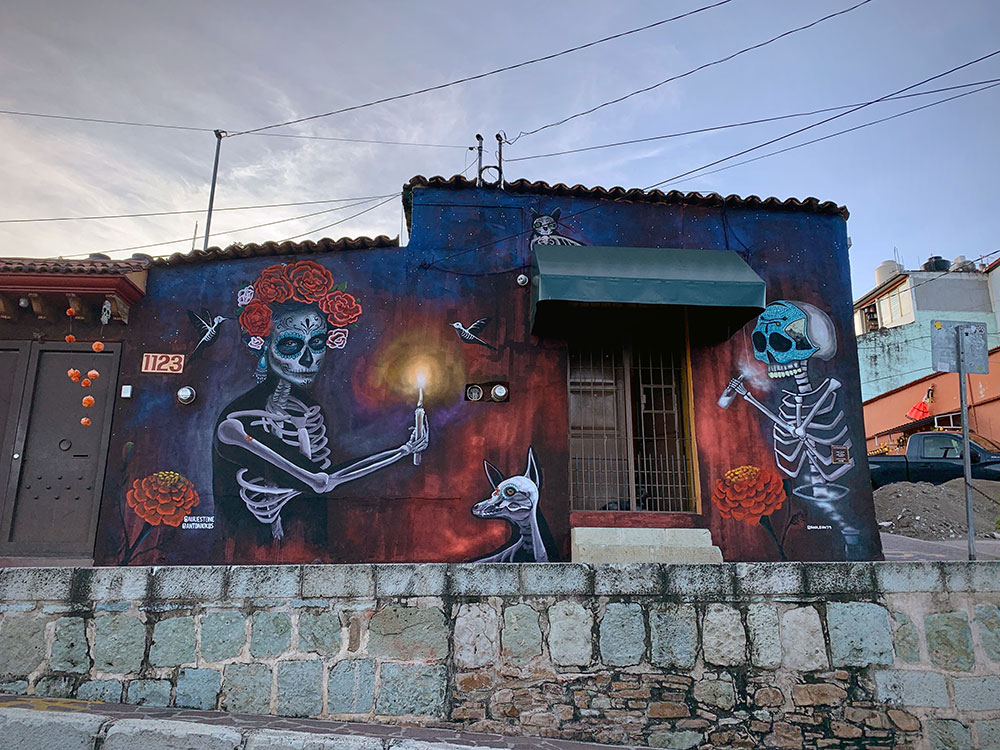
The student residence and surrounding area were beautiful and filled with eclectic restaurants, exciting street art, and friendly people. We emphasize local language learning in each country we visit, and students had plenty of opportunities to practice Spanish with the locals while ordering traditional fare like tlayudas and roasted crickets or attending art exhibitions around the city.
This cozy and welcoming atmosphere really lent itself to the projects our students explored, which we’ll dive into further below.
Orientation Week
After arriving in Oaxaca and undergoing a quarantine, CM2 students participated in an orientation week. Orientation weeks help students gain a sense of their expectations for the term while also exposing them to some of the places that make their term location so special.
Students started off their orientation week with a two-hour hike through the semi-arid desert region around Hierve el Agua, a system of petrified travertine waterfalls. This excursion was extra special, as Hierve el Agua is one of only two such formations in the whole world.
Coyote Aventuras provided a healthy breakfast and free time for swimming in the artificial pools before the whole group embarked on the grueling (yet refreshing and mostly downhill) hike to a waterfall in a cave.
The rest of orientation involved getting students acclimated to Oaxaca City and prepping them for their upcoming module work.
weXplore
For this terms weXplore CM2 students had three options to choose from, each with different activities and locations throughout Mexico. The options were Treexplore, Cityxplore, and Aquaxplore. Each weXplore focused on a different set of TGS’s core values.
CityXplore
CM2 students participating in the “City weXplore” flew from Oaxaca to Mexico City for a week-long weXplore focused on art, architecture, cultural experiences, and sporting events. The CityXplore focused on the core value Satya (Sanskrit); Live truth – in a way that is honest, steadfast, and uplifting to others.
After arriving in Mexico City, they started the weXplore by attending a lively soccer/football match between San Luis vs. América (Mexico’s most decorated club).
Students participated in a full-day gastronomy tour led by tour guides Astrid and Alisa on day two. The eclectic tour consisted of traditional street foods, including chamoy, insects, candy, tlacoyos, quesadillas, pambazos, carnitas or potato tacos, and fresh fruit.
On day three, students visited the Museo Soumaya, where they had a chance to witness one of the most well-known sculptures in the world, Auguste Rodin’s The Thinker, alongside over 60,000 pieces of art. They wrapped the day up with a viewing of “The Tragedy of Macbeth” at Cineteca Nacional.
On day four, participants learned about murals at Universidad Nacional Autónoma de México before stopping by Frida Kahlo’s house/museum and Diego Rivera’s studio. Afterward, they explored two of Mexico City’s most beloved neighborhoods, Coyoacán and San Ángel, whose cobbled streets and colorful historic buildings are some of the most culturally important in the entire city.
To conclude the day, they attended a CMLL Lucha Libre event at the Arena México. One of Mexico’s two biggest wrestling federations, CMLL is famous for its high flying luchadors, who perform death-defying dives on a regular basis.
TreeXplore
CM2 participants in the wilderness weXplore (TreeXplore) headed to Sierra Juárez for a tech-free experience centered around the region’s lush natural environments. The TreeXplore focused on the core values of Grit and Kaizen. Grit means embracing challenges with passion and courage. Kaizen means continually improving and being self-aware, responsible, and disciplined.
Students spent the week living outdoors and participated in various physically demanding activities focused on leadership, creativity, and adaptability. Students enjoyed scenic hikes and grew together through a series of team-building activities.
AquaXplore
Students in the AquaXplore headed to Playa Del Carmen to participate in a five-day intensive diving certification course with a full-day excursion into the jungle. Students also visited Chitchen Itza, an ancient ruin that is one of the seven wonders of the world.
The AquaXplore focused on the core values Qiú Zhi Yù and Ubuntu. Qiú Zhi Yù means a thirst for knowledge and to be open, be curious, and challenge assumptions. Ubuntu means connecting to a greater whole – in mutual support and community.
Project-Based Learning at THINK Global School
THINK Global School does not employ a traditional classroom dynamic; rather, learning is student-centered and focused on projects that explore real-world challenges.
Each term, students select a teacher-led module to participate in. These eight-week modules are designed by our educators and ask students to solve a driving question by term’s end, with their findings being shared during an end-of-term showcase.
Each module is built on learning targets, which serve as the backbone of our curriculum. By constructing modules around learning targets, we can ensure that each student receives a comprehensive education, as satisfying each learning target at least once is a condition for graduation. Science-themed modules will likely have science-based learning targets attached, while an art project will focus on art-themed learning targets. 21st Century Skills, which include applicable life skills like communication and critical thinking, are also a mainstay of our students’ projects.
You can find all of our learning targets below and learn more about them here.
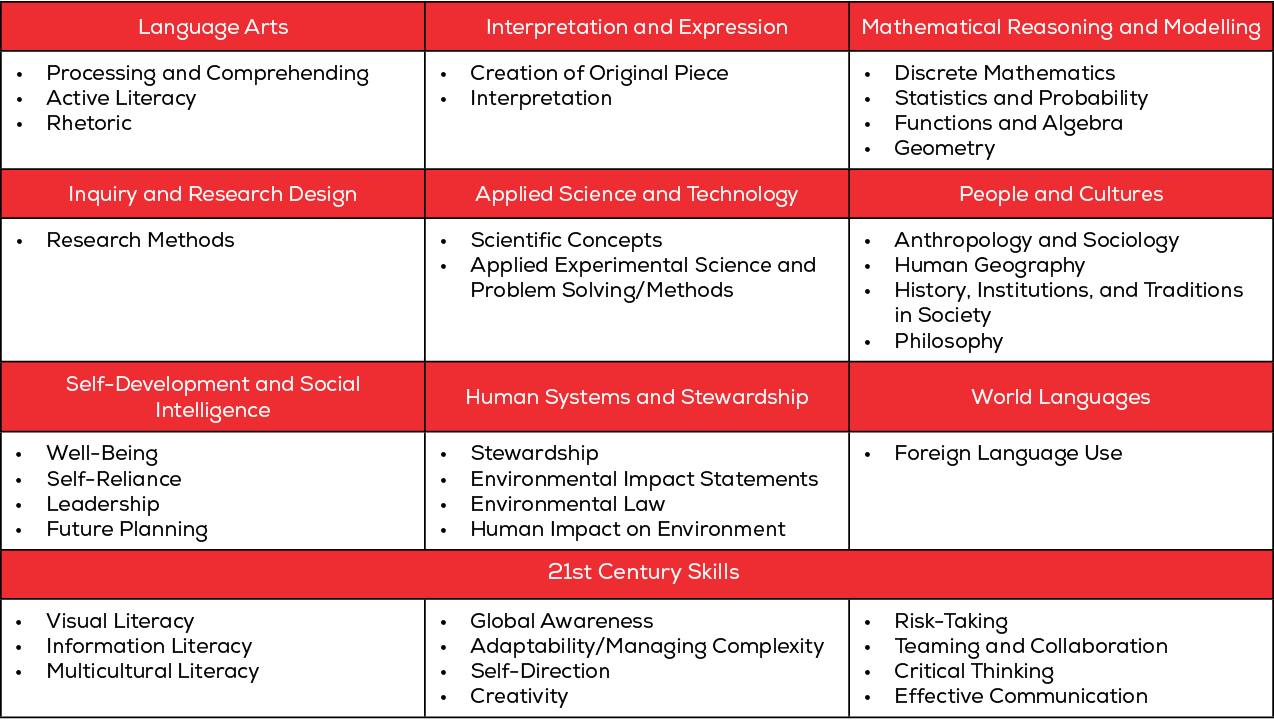
Valuable Place-Based Experiences
Over their eight weeks in-country, students regularly interact with local experts and other community members as they work towards solving their driving questions.
These firsthand experiences are integral to the THINK Global School educational experience, as they breed empathy and cultivate a deep understanding of peoples, cultures, and surroundings. Better yet, they help develop the skills, knowledge, and experiences necessary to become the changemakers of tomorrow.

Students learn about local foods from Chef Oscar Carrizosa
During their time abroad, students also build lifelong bonds with their classmates, who hail from over thirty countries and inform discussions just as much as the locations THINK Global School visits. By reaching across cultural and geographical divides, students at THINK Global School overcome biases while developing a deeper understanding of their shared humanity.
Mexico Projects
SPEED Oaxaca Module
In the SPEED module, this term students examined the driving question: How can I use video to present my investigations (SPEED factors) into the lives of the Zapotec people of Oaxaca, Mexico?
In this instance, SPEED refers to the social, political, economic, environmental, and demographic factors impacting the Zapotec people and their culture and traditions. The Zapotec have resided in Mexico for over 2,500 years and increasingly face challenges to their way of life. Gaining perspectives on the Zapotec peoples and these challenges were the central goal for participants in this module.
To convey this information, students learned the stages of video production (documentary, video essay, and broadcast journal style) in order to display their connections and findings to an external audience.
Online Week
During the week before arriving in Oaxaca, participants in the SPEED module began looking into language learning in the state of Oaxaca. Students were expected to answer the following questions:
- In what ways is language important for the people of Oaxaca?
- How do national language and educational policies serve to threaten indigenous tongues?
- What efforts are local communities taking to address these threats?
- Evaluate the potential solutions that communities have found to reinvigorate their native tongues
Santa Ines Yatzeche Excursion
(Thanks to CM2 Student Raf W. for the excursions context.)
For their first module excursion, SPEED participants visited an indigenous village alongside an indigenous political activist, who is the governor of education for Santa Ines Yatzeche. Upon arrival, students met the town’s president, who holds the distinction of being the first female president elected.
Students were treated to local foods and jumped into a line of questioning regarding the stigmas surrounding women holding high positions in certain Oaxacan towns.
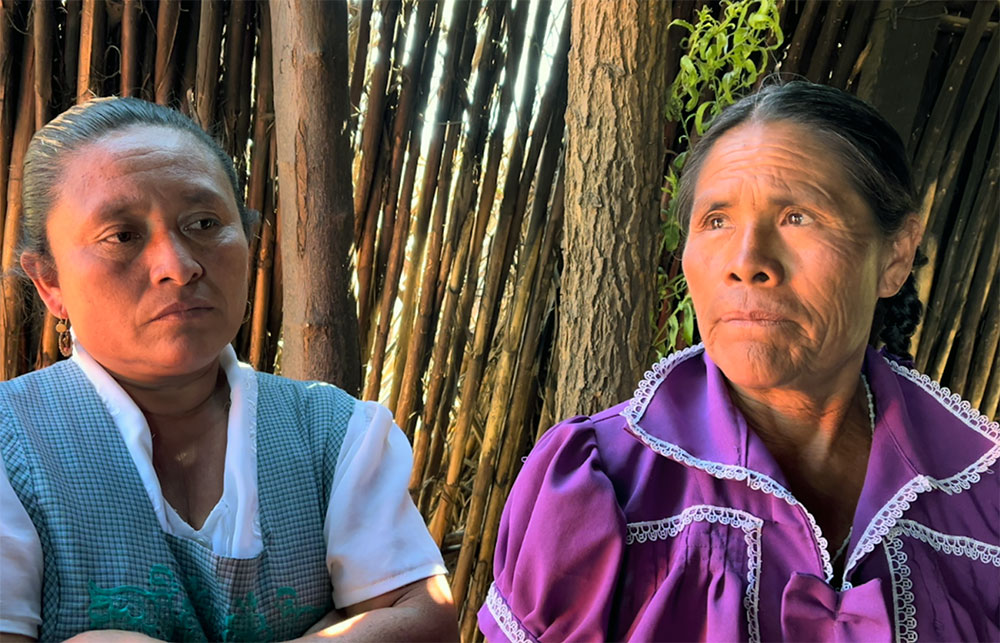
Image Credit: Raf W.
Following their meal and conversation, students went on a tour of the village, where they heard stories from locals whose lives had been directly improved by the presidenta. Following their tour, students headed back to the main governmental building for a lecture about feminism and the feminist movement in Oaxaca, which covered concepts like machismo, intersectional feminism, femicide, and domestic abuse in indigenous villages. Despite the heavy topics, students found solace in the brave women in their company who were fighting for a brighter future.
Santo Tomas Jalieza Excursion
On their second excursion, students traveled to Santo Tomas Jalieza with community expert Anna Paula Fuente to speak with a family of three sisters that have been weaving traditionally for generations.
One of the family members shared details about the craft, including its role in preserving Zapotec cultural identity. She and her family continue the tradition in a growing context of economic migration (where community members move to other cities or countries for the prospect of higher wages).
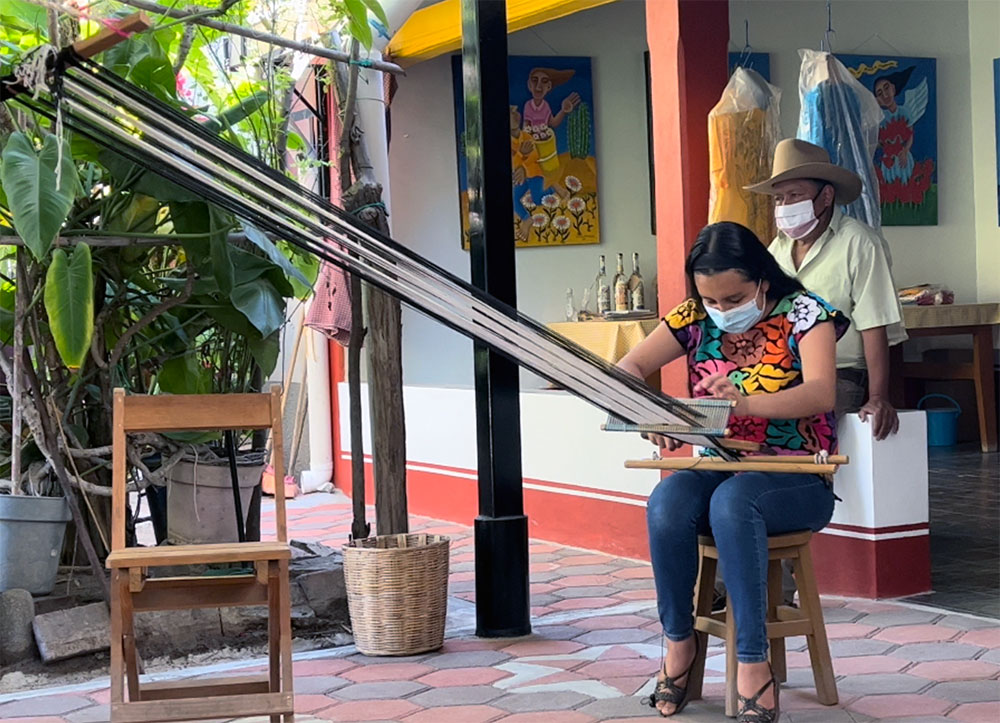
Image Credit: Raf W.
Students learned how the three sisters had adapted to modern times, balancing a business plan with what they considered important: weaving all day together by hand. Unlike many weavers who had fallen victim to globalization, these three sisters are savvy in running their business, even maintaining a social media presence (run by a younger member of the family).
Students had the chance to interview the family members, exploring the extent to which economic migration is a significant threat to the Zapotec identity.
José Angel Santiago Art Studio Excursion
For their third module excursion, students paid a visit to the art studio of José Angel Santiago, a local artist who uses multiple mediums to touch on issues faced by Oaxacan communities.
José explained how he got inspiration from all different religions and cultures and how his upbringing in a fishing village was very different than the art world he now inhabits.
Students got to see José’s clay houses which each hold different meanings. What was unique about the artwork in his collection were the vivid depictions of death and people dying, which seemed to be politically motivated by the government’s unequal treatment of Zapotec communities.
Towards the end of the presentation, José circled back to how religions are often intertwined. He explained how a lot of his inspiration comes from different versions of a concept being interpreted differently amongst different religions and cultures, and how he uses these concepts in his painting.
ICAPET Facility Excursion
“This excursion was beneficial as it showed me that everyone has potential, but often times do not have the guidance and/or resources to achieve what they could.”
For their fourth excursion to better understand Zapotec culture, SPEED module participants visited an ICAPET facility. ICAPET facilities are government organizations with the stated goal of boosting formal employment and entrepreneurship opportunities within Oaxaca. The excursion showed how education can be a tool used by the impoverished in Oaxaca to escape poverty.
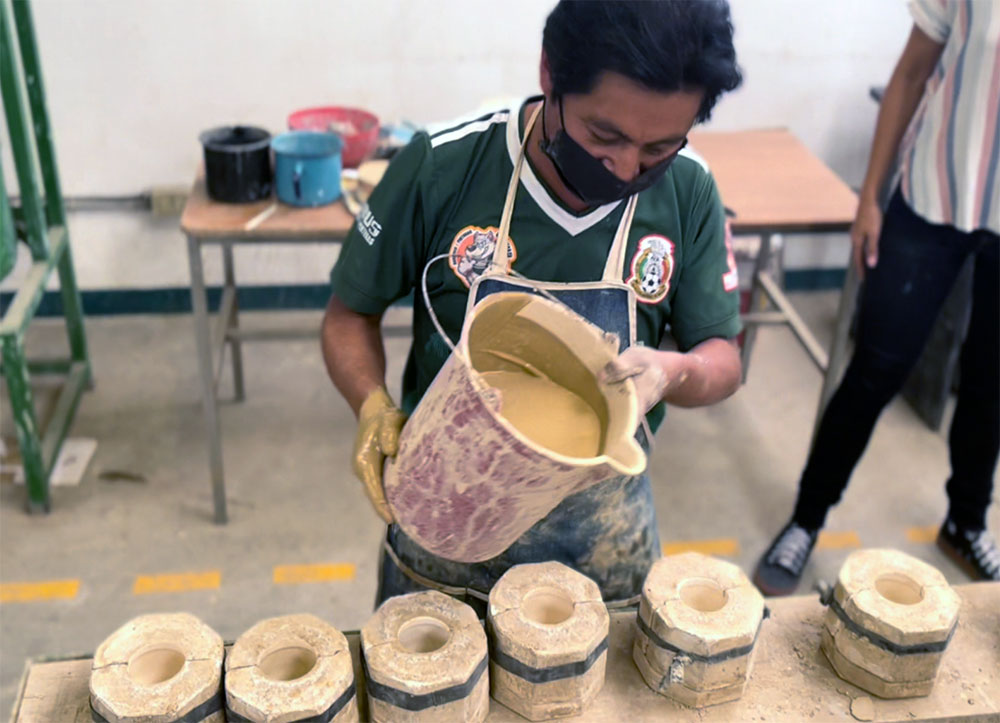
Image Credit: Raf W.
Students met pottery and carpentry professors who taught classes at ICAPET and learned that the carpentry professor was a graduate of the course himself. He’d gone from a student to a full-time professor within five years and was now earning a living.
They also learned about global support for ICAPET, with countries like Japan, Germany, and Turkey all donating to the specific facility the students visited, expecting nothing but recognition in return.
Module participant Raf shared that he learned how many people depend heavily on these courses, as women rely on them to make enough money to get out of their domestic violence situations. He also stated how modern-day contexts like COVID affect these initiatives, as vocational skills like carpentry aren’t easy to teach online — carpentry takes a lot of hands-on experience.
ICAPET provides certification at the end of their courses, a tremendous boon in finding work in the modern-day world. Besides training, ICAPET also evaluates those with carpentry skills who might not possess certification, providing them with a leg up in the world.
Project Outcomes
Language Death in Oaxaca by Diego M.
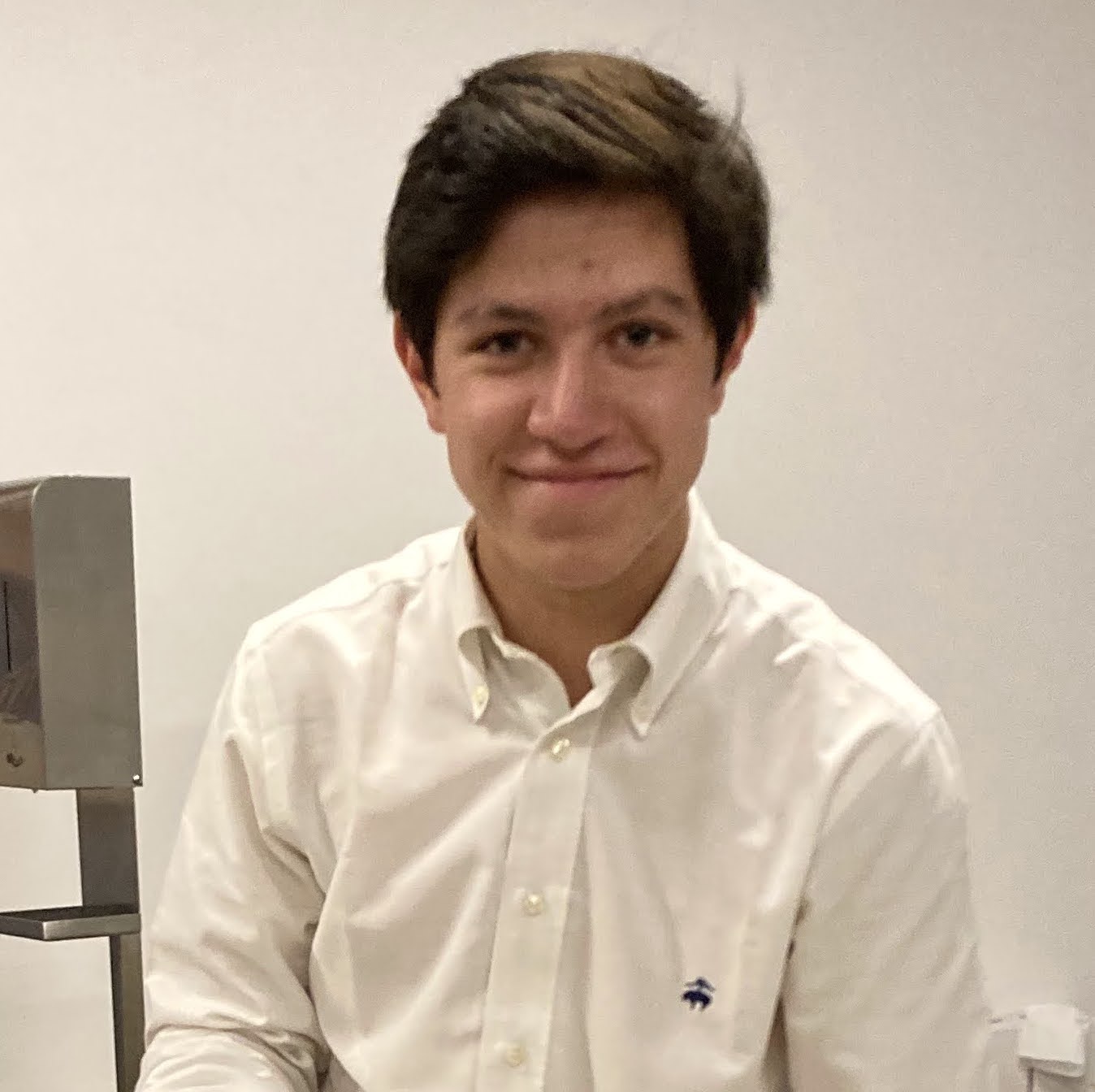
Even though I live in Mexico, exploring another side of the culture was really interesting, such as language death. Connecting with people and learning about the story was something special that I can’t really put into words.
-Class of 2023 Student Diego M.
For his project, Diego focused on the death of indigenous languages in Oaxaca and how the Zapotec people are fighting to keep their language alive, despite the odds.
Language Death in Oaxaca by Zoya A.
In this project, Zoya looked at the lives of the Zapotec community in Oaxaca, and how their lives are impacted by their exposure to Spanish. Her film explores the different aspects of Spanish language exposure (in education, economy and stigma) and what it meant for the Zapotec people, with a question left to the audience: What does the future look like for the Zapotec?
VRchaeology Module
VRchaeology was an interdisciplinary module that combined elements of virtual reality (VR) and archaeology. Students were tasked with answering the following driving question: How can I preserve a part of Zapotec history and give it a new life in the form of VR experiences?
Participants investigated Oaxacan history, explored archaeological sites, and developed 3D film production skills to create VR experiences that preserve the past and make Oaxacan material culture more available to the world.
Students visited sites such as Yagul and Mitla, learned from guest speakers about the tradition of clay artifacts and the future of VR, and developed storyboards and shot lists for their final experiences.
San Pablo Villa de Mitla Excursion
For their first excursion, module participants visited San Pablo Villa de Mitla, famous for being the home of the Mitla archaeological ruins site. The visit was an interesting experience as it provided a lot of insight into the lives of the Zapotec people and how they lived at the height of their civilization.
Students learned about different plants in the region and their curative properties, saw Zapotec rituals, and visited various caves to learn about their functions. The caves were the center of life and provided food storage and sleeping areas, and are renowned for the hand paintings that adorn their walls.
The visit also offered insights into Zapotec building techniques, society, and transportation methods and allowed students to see how a local church had merged different cultural viewpoints, a process known as syncretism.
Archaeological Site of Yagul Excursion
For their second excursion, module participants went to the archaeological site of Yagul, which was primarily inhabited between 750 and 950 A.D. Students had the entire site to themselves, giving them privacy to ask questions, film, and work on their projects. They spent the day exploring the labyrinthian ruins, which contain tombs of high-ranking society members. They also explored the settings on their cameras as well as angles at which they could film.
A highlight of the trip was visiting the Yagul ball court in the ceremonial center, which is the largest ball court in the Oaxaca Valley.
Monte Alban Excursion
For their final excursion, students went to Monte Albán, the former capital of the Zapotec people. The intricately built site is massive and contains a beautiful plaza, two platforms, a palace, ball court, and tomb complex.
Given its structures on astronomy and religion, module participants Alex and Aarushi were really happy with what they found and how Monte Alban could be used in their final project, which you can find below.
Project Outcomes
Journey to Monte Albán by Aarushi A. and Alex N.
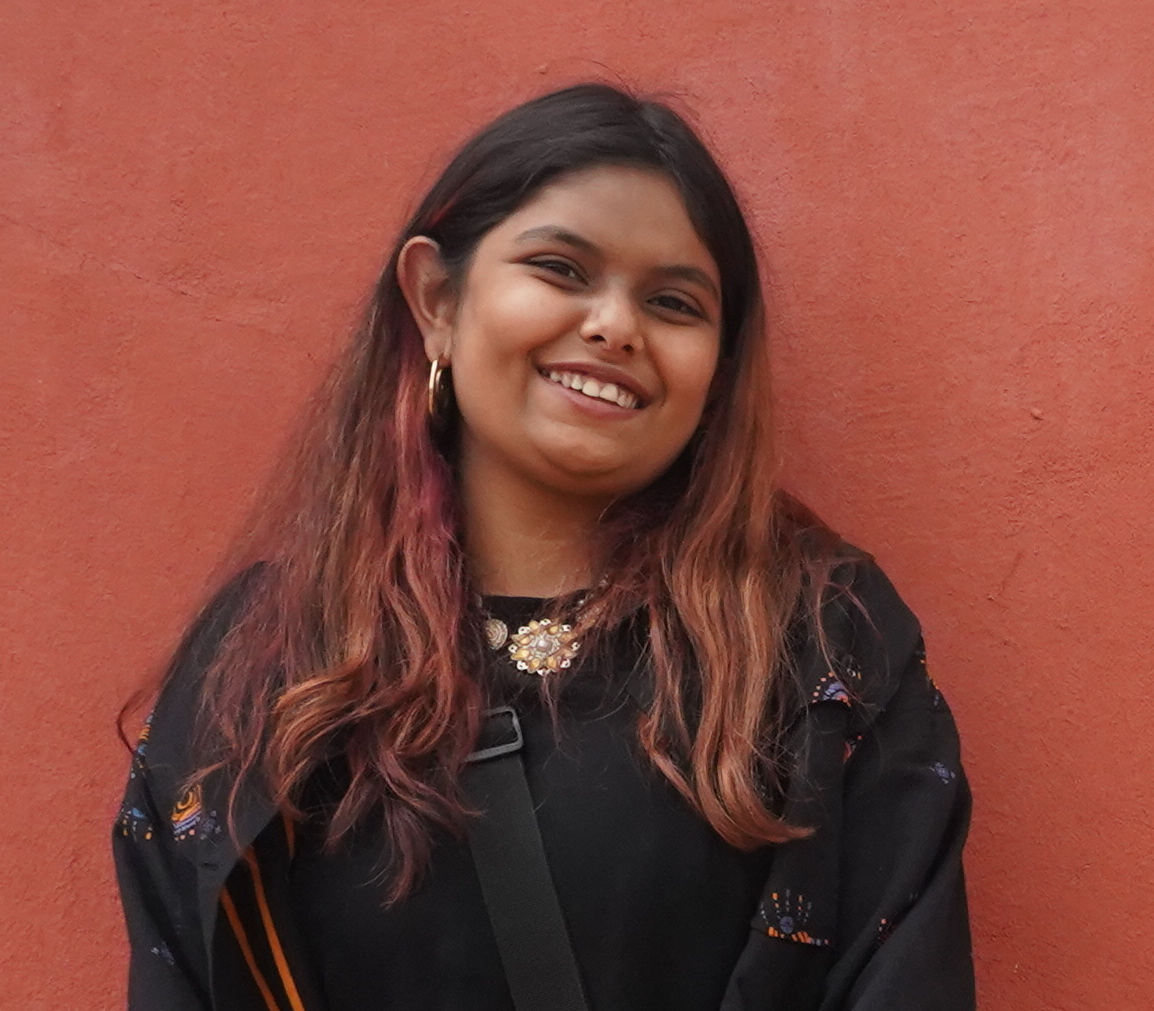
This module was really exciting for me. I learned a lot of new things and added multiple new subjects to my skill set. This module was also extremely challenging since I had no real prior knowledge about virtual reality or archaeology, but because of our excursions and guest speakers, I was able to create a video VR experience which I am extremely proud of!
-Class of 2023 Student Aarushi A.
Aarushi and Alex’s video focused on the Central Valley of Oaxaca and the civilization that emerged known as the “Be’ena’ Za” or “The Cloud People.” The Be’ena’ Za thrived and became one of the largest civilizations in Mesoamerica, and today they are known as the Zapotec.
Alex and Aarushi introduce viewers to the world of the Zapotec through a VR experience. Their video takes you back in time on a journey into the magnificent city of Monte Albán. The pair invite you to embrace the wisdom of the Zapotec through astrology, religious, and ancient beliefs.
Syncretic Sculptures module
This term, our CM2 Syncretic Sculpture module focused on the following driving question: How can we model a clay sculpture inspired by Mexican beliefs and religious syncretism (the merging of different beliefs) to represent a fusion of our personal beliefs and values?
To do so, participants investigated critical periods in Mexican history, focusing on the values & beliefs of the Zapotecs, Mayans, Mixtecs, Aztecs, and Christians. From an experiential learning standpoint, they visited relevant sites, met with local artists, and analyzed works of art from a broad range of Oaxacan cultures.
For their first module excursion, students visited a textile museum with Nicholas Johnson to approach local examples of values, beliefs, and syncretism.
Next, they had the opportunity to visit Adan Paredes’ ceramic workshop in San Agustin Etla and converse about archeology, ceramic art, and Oaxacan culture. After talking with the students, Adan Paredes guided them in creating their own clay sculptures.
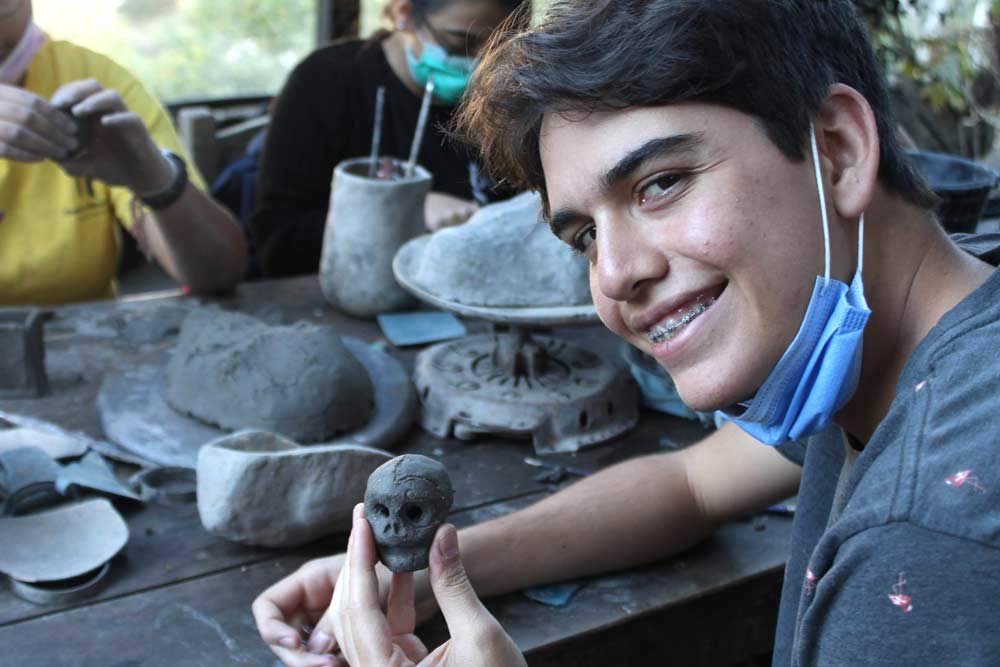
For their third experience, students visited another clay workshop, located in Santa María Atzompa. While here, they spoke and learned from the artist, Francisco Martinez, who has cultivated his own unique style and finishes by making clay sculptures in greys, blacks, and reds.
Towards the end of the term, participants furthered their knowledge of Oaxaca’s gastronomic tastes and traditions by taking part in a culinary experience at Casa Crespo in downtown Oaxaca. Syncretism refers to when the blending of different cultures occurs, and the hybrid nature of Oaxaca’s dishes is a perfect example of syncretism in action.
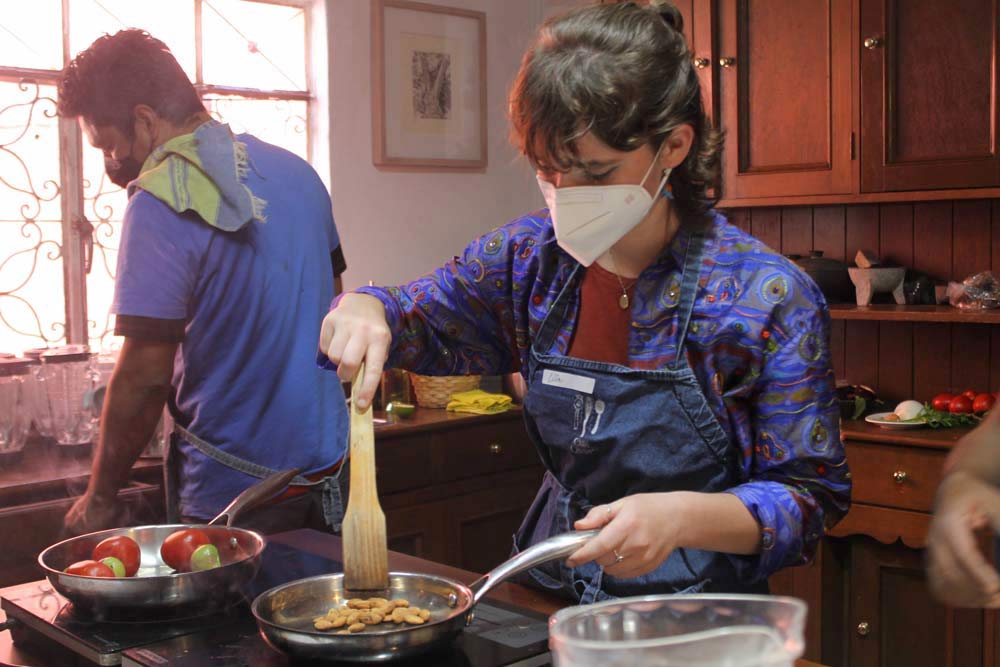
The experience was hosted by Chef Oscar Carrizosa, who led students on a walking tour of the local market and showed them how to cook six local dishes, including soups, salsas, and desserts, using prehispanic and colonial ingredients and techniques. Throughout the class, Oscar and the lesson participants reflected on the importance of food and how cultural syncretism is expressed through the meals students were preparing.
Project Outcomes
Qandeel-e-Zeist (Light of Life) by Minahil M.
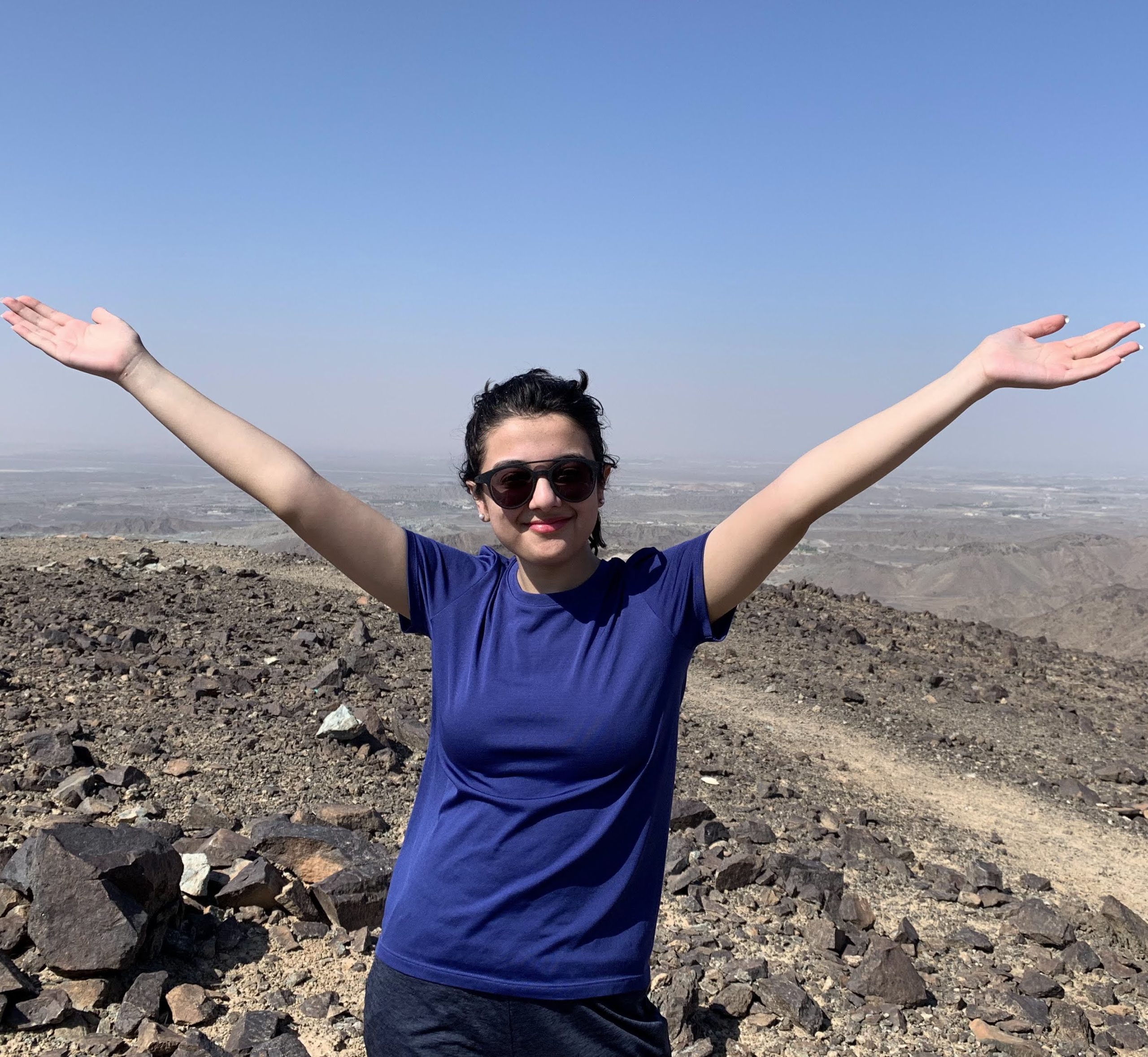
“Everyone in the world has a set of values and beliefs that guide and enlighten their lives. Through this module, I learned about my own values and beliefs in-depth, developed a greater understanding and appreciation of the personal values of indigenous cultures in Oaxaca, especially the Zapotecs.”
-Class of 2023 Student Minahil M.
For her project, Minahil created a sculpture of Qandeel-e-Zeist (Light of Life), which embodies the values and beliefs that guide and enlighten her life.
Minahil’s project blends Zapotec symbolism, the Chinese Yin and Yang, Quranic verses, Urdu poetry, and personal emblems that convey how different cultures, people, and places have shaped the person Minahil is today.
The treasure chest represents her beliefs and values and highlights how the elements in her sculpture are invaluable to her. Leaving the treasure chest open expresses the importance of being open-minded. It further indicates how her values and beliefs are changing.
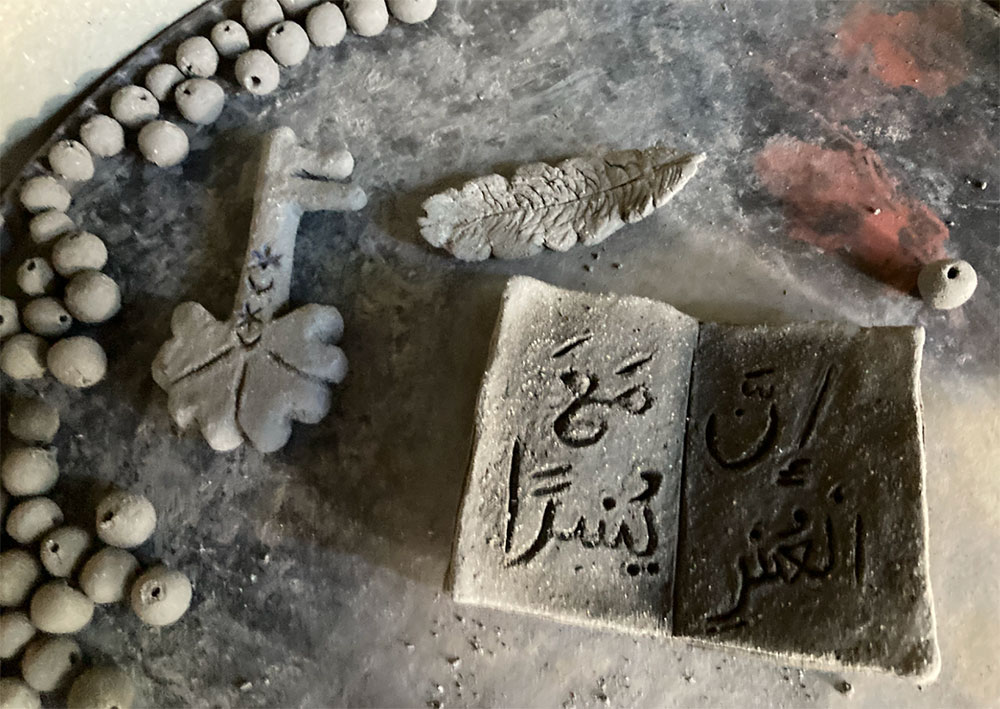
El Camino by Lucas B.
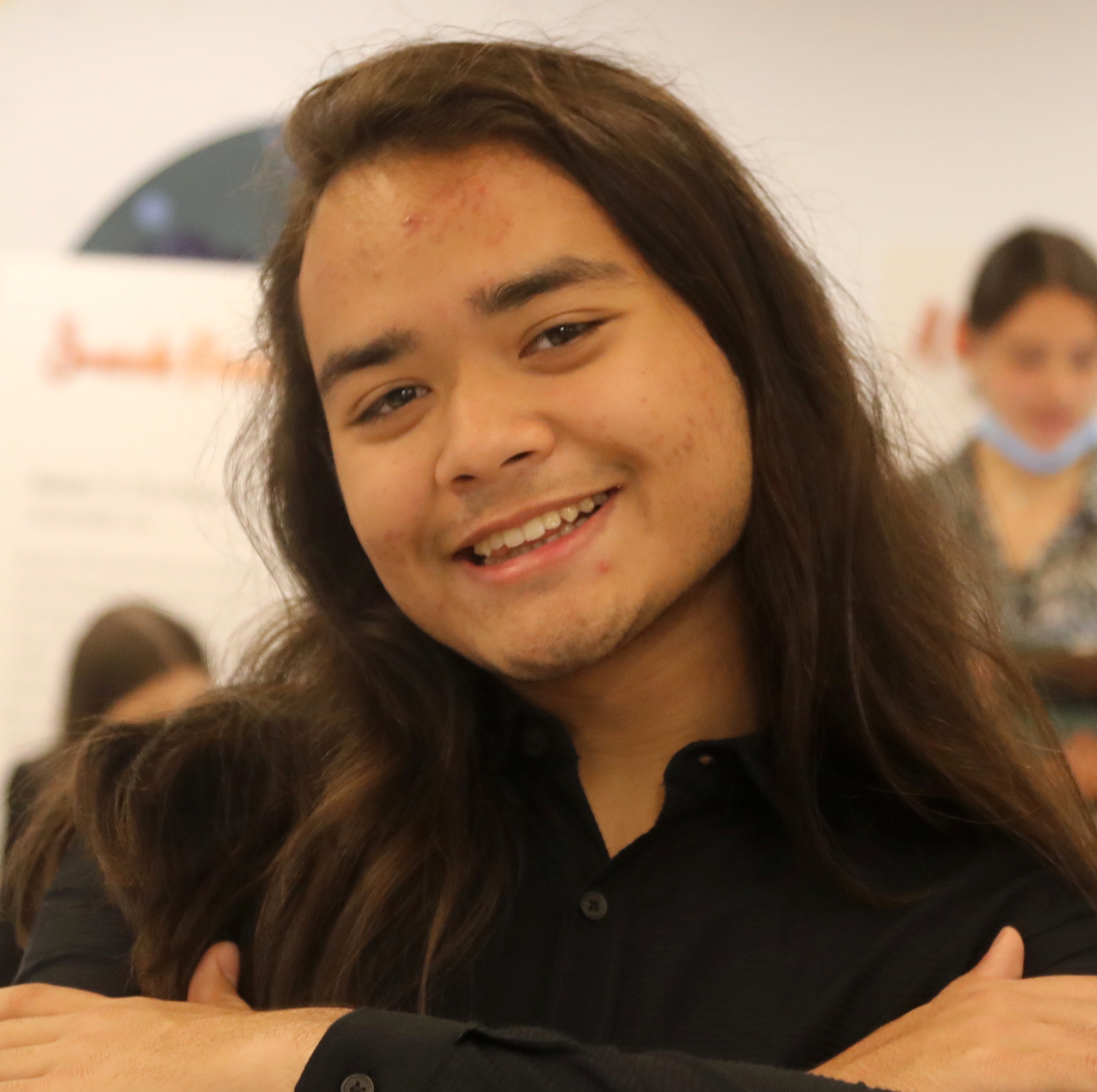
“Over my weeks in Mexico, I could explore in-depth the values of the belief systems that gave birth to Oaxaca’s unique syncretic landscape. As I appreciated the elements of these highly different cultures, I was able to see a multitude of symbols that resembled my own faith everywhere. The final sculpture I constructed is an embracement of both my learnings and some of my most foundational beliefs about life and the universe.”
-Class of 2022 Student Lucas B.
Life is seen as a transitory stage towards something greater for many belief systems. “El Camino” – meaning “The Path” – represents a merger between the Zapotec and Catholic belief systems in Oaxaca, and the most important one in the construction of Lucas’s faith, Buddhism.
The upper part of Lucas’s sculpture symbolizes the Zapotec’s way towards Mictlan, a place of eternal peace, which consists of a nine-level journey that takes four years to complete. The cross on the opposite end is an element of the Christian faith that embraces the challenges that ultimately become our passports to sanctification. In the middle, they meet to become one, referencing both the syncretism in Oaxaca and the end of duality – a Buddhist concept of spiritual enlightenment.
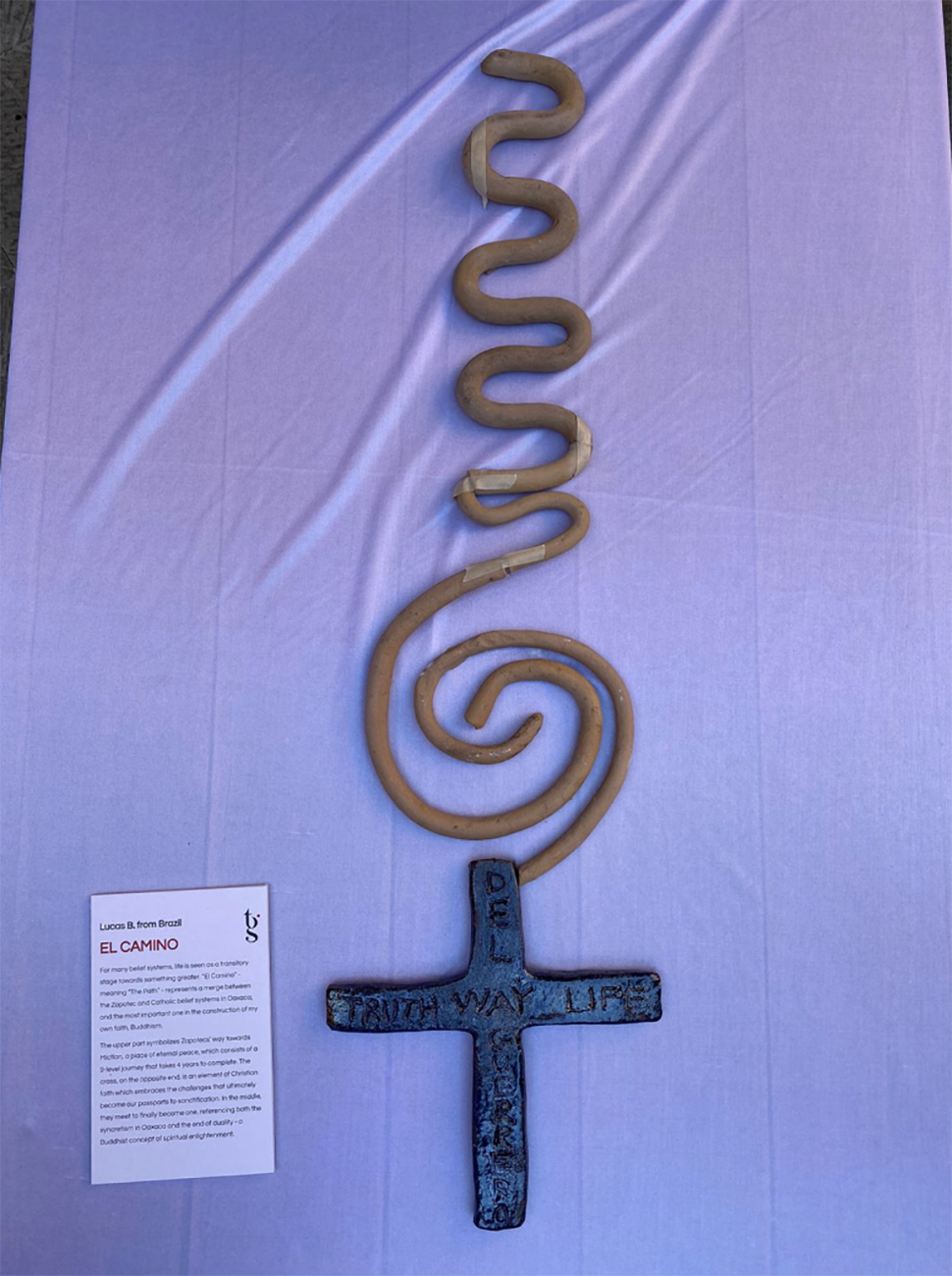
Al Khail by Bido H.
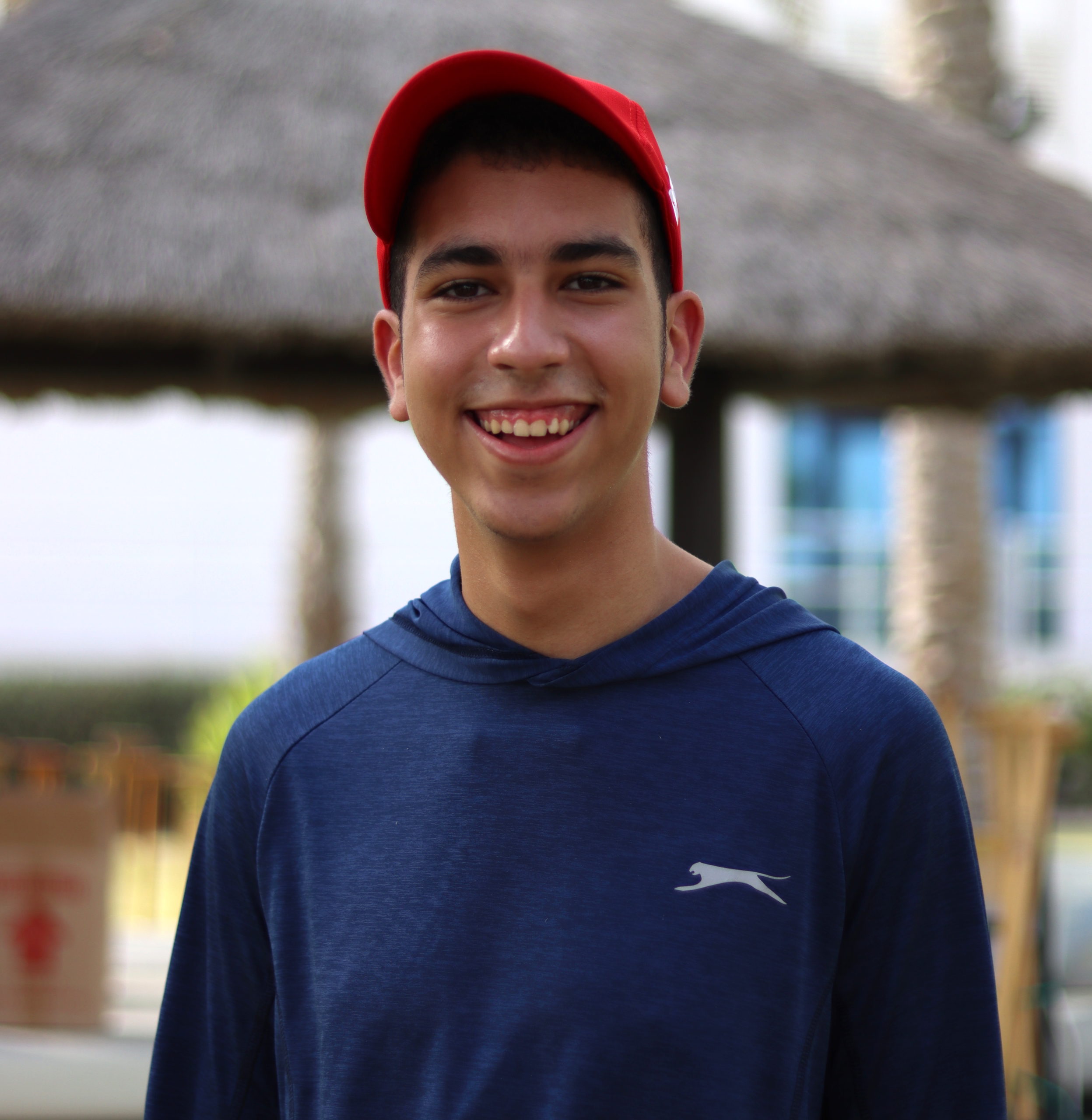
I had a limiting belief before starting this module that I’m not very artistic — the first times I experimented with clay I found it very difficult; however, I dedicated time to experimenting with different techniques and used digital art and 3D modeling to help create my sculpture. I learned that just by accepting something and working hard for it, we can really achieve more than we expect.
-Class of 2023 Student Bido H.
Bido calls his sculpture “Al Khail,” which means horse in Arabic. It is intended to show a fusion of his values and beliefs. The wings are a symbol of freedom, ambition, and a representation of spirituality. Al Khail is inspired mainly by nature.
Bido’s belief in “Kama Tudeen Tudan,” meaning “Good Karma,” is represented by the birds on the top of the horse and inspired by the Old Man’s Beard plant grown in Oaxaca’s cloud forest.
Both the plant and the tree live together and are kind to each other as part of the mutualistic symbiosis relationship. Similarly, the horse was kind enough to let the birds live on top of him; it turns out the birds feed on the little creatures on the horse’s body, creating a mutually beneficial relationship that started with an act of kindness.
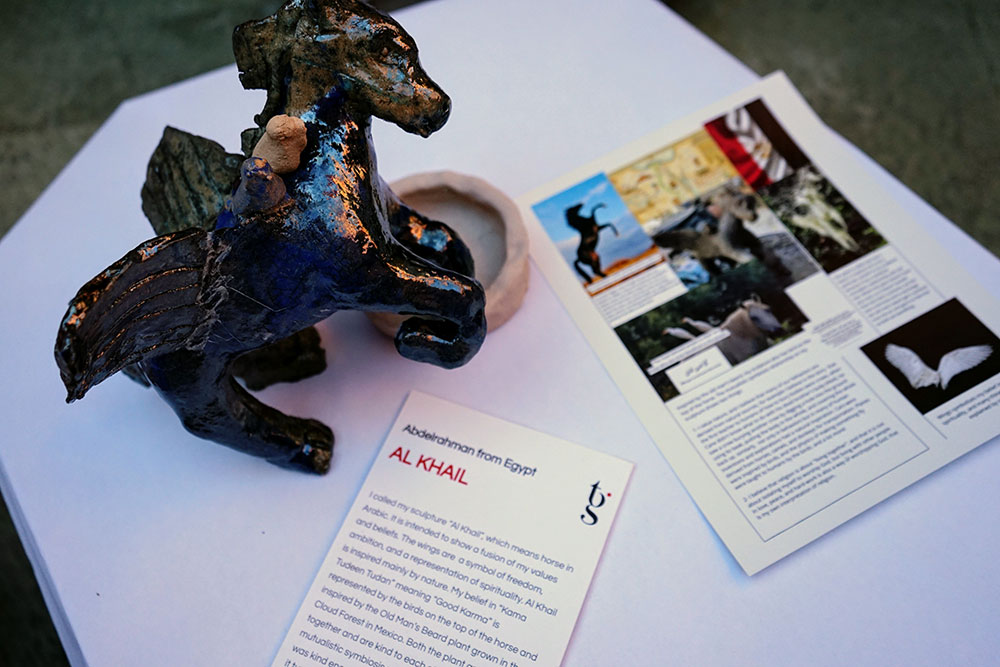
Personal Projects
Photography Oaxaca by Raf W.

This project gave me the time to just pause amongst all the craziness in a term. When taking photos I felt relaxed and that I was really appreciating Oaxaca for what it was. I learned that if we don’t pay attention to the small details of a given environment, we might miss its beauty.
-Class of 2024 Student Raf W.
Driving Question: How can I create a photo album capturing the true essence of street art in Oaxaca City?
Raf’s personal project is about photography and photo editing. The goal of his project was to capture the essence of street art in Oaxaca. Due to the fact that Oaxaca has an abundance of incredible street art, Raf felt it was of high importance to capture this beauty using photography and exemplify it using Photoshop. You can see the pictures Raf has taken and edited below, which hopefully provide a sense of Oaxaca’s beauty.
Leftism Through Zines by Ella M. and Luiza B.
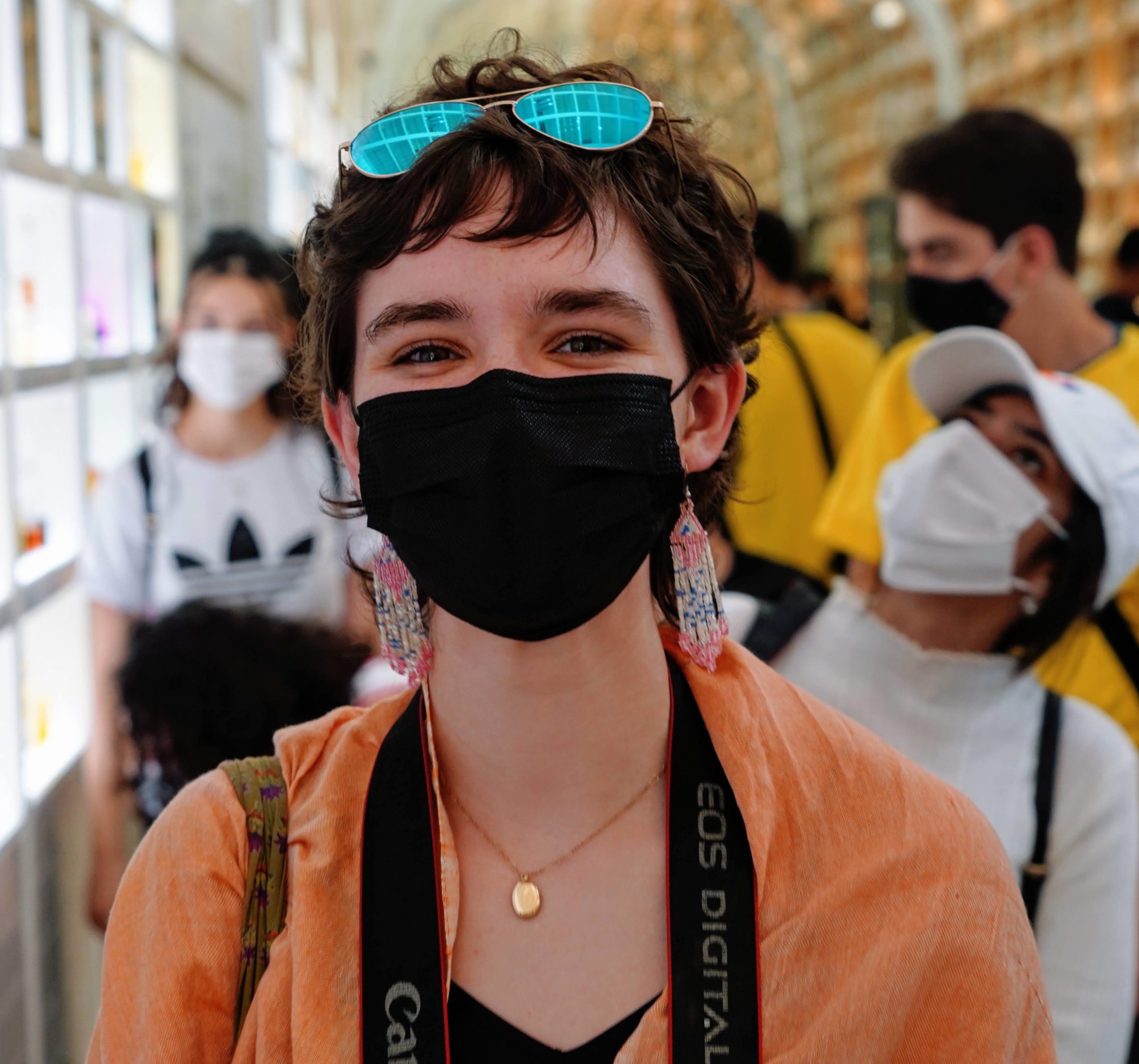
I loved this project. Truly, I cannot describe how proud I am of this Zine and the work Luiza and I accomplished. Also, there is no way to describe the joy and relaxation of sitting cutting out magazines for hours on end; it is the best thing ever.
-Class of 2022 Student Ella M.
Driving Question: How can we represent the evolution of leftist movements in Mexico through a zine?
Ella and Luiza’s project is about the evolution of leftism in Mexico, especially in the region of Oaxaca. They explored the Mexican Revolution, the Feminist Movement in Mexico, and the future of Indigenous leadership throughout the term, which cumulated in a final zine showcasing their learning.
Spice Hazard by Saffron B. and Santiago D.
Driving Question: How can we improve our spice tolerance through a mixture of science and cultural understanding?
This project was a dive into science and Mexican cuisine and culture. Saffron and Santiago researched many different kinds of chili peppers before deciding on five local peppers that they and a group of volunteers would be eating to increase their spice tolerance: costeño, pasilla, jalapeño, chiltepín, and habanero. The pair recorded themselves doing so to share their findings.
“Working on this project was painful, but it was so fun and totally worth it. I learned that eating spicy food can make you feel like you’re being stabbed and yet fill you with a rush of adrenaline, and to be able to share that feeling is simply amazing.” – Class of 2024 student Santiago D.
Service-Learning : Understanding Mental Health by Noemi T.

I learned so much from this experience and I am so grateful that I got the opportunity to complete this project and hopefully help at some people understand this topic better. This project was very important to me as growing up in NZ I have had so many experiences seeing the effects of poor mental health on peers and people within my community so it meant so much to be able to be part of the road to a better future around this topic
-Class of 2022 Student Noemi T.
Driving Question: How can I de-stigmatize mental illness through information and awareness?
For her service-learning project, Class of 2022 Senior Noemie created lessons around understanding the fundamentals of mental health.
These include understanding what mental health is, what factors can affect mental health, understanding mental illness, keeping yourself and others safe, and how and where to reach out or find help. Noemie then presented these seminars to students at TGS due to being unable to complete the seminars at home due to Covid.


